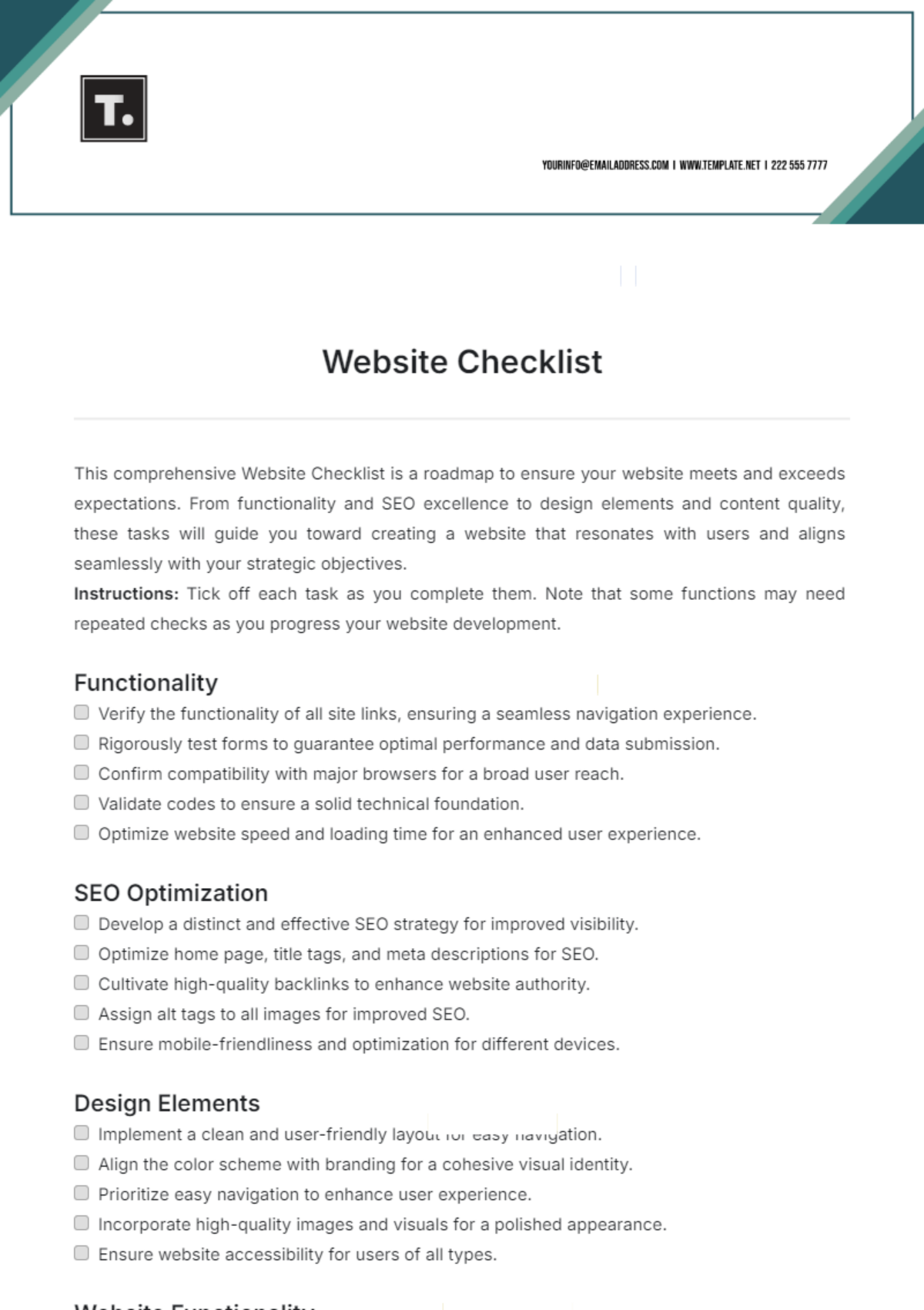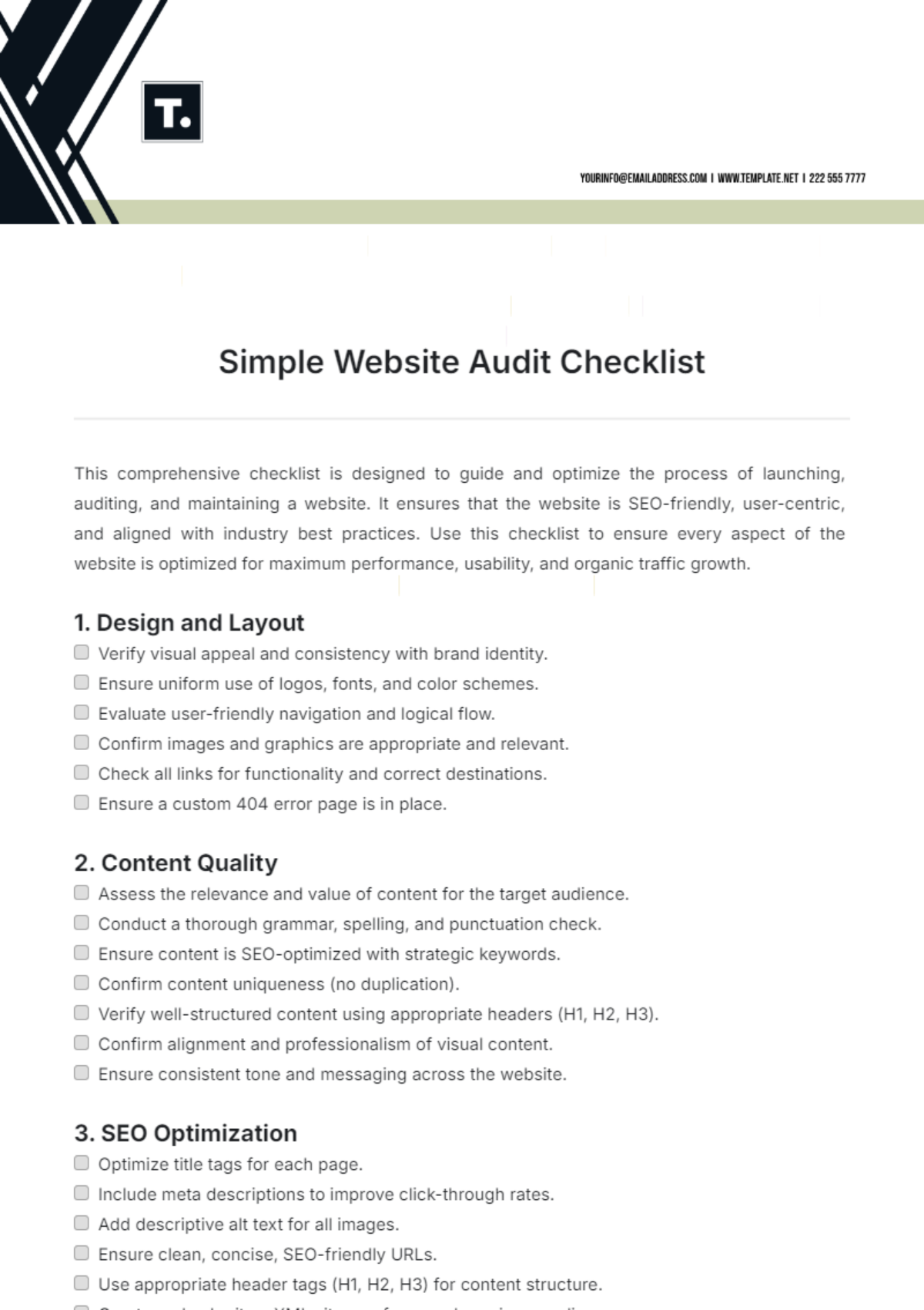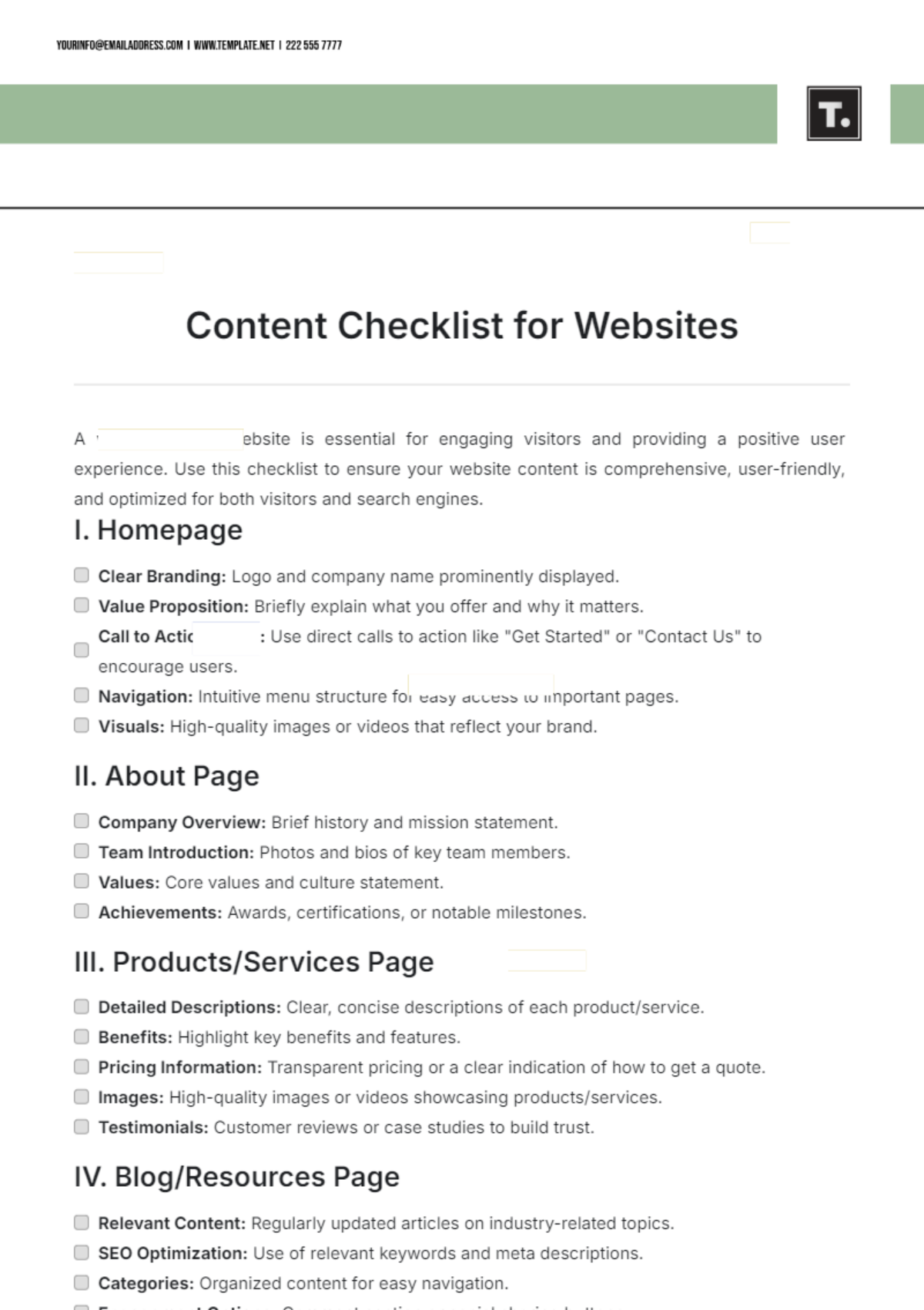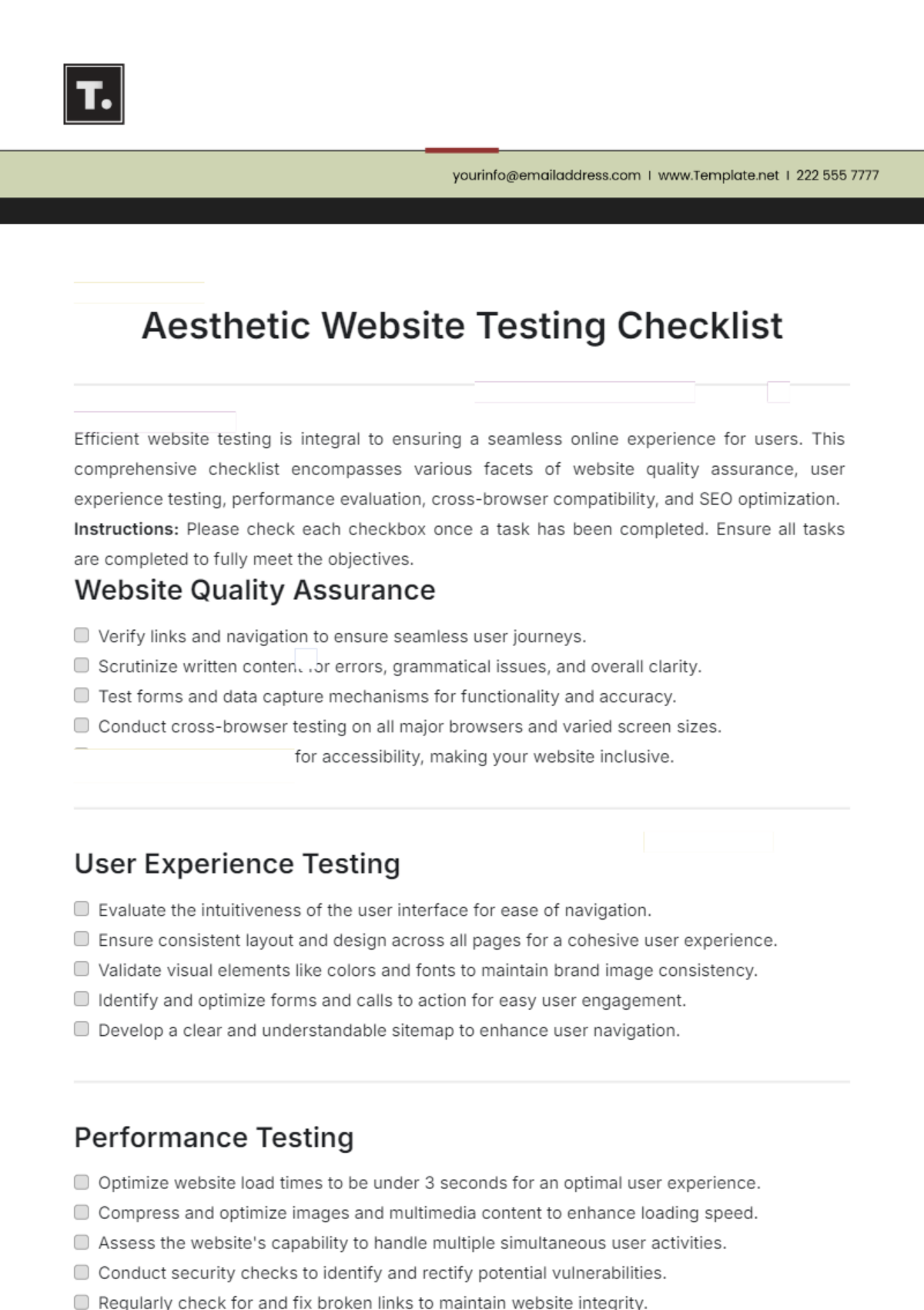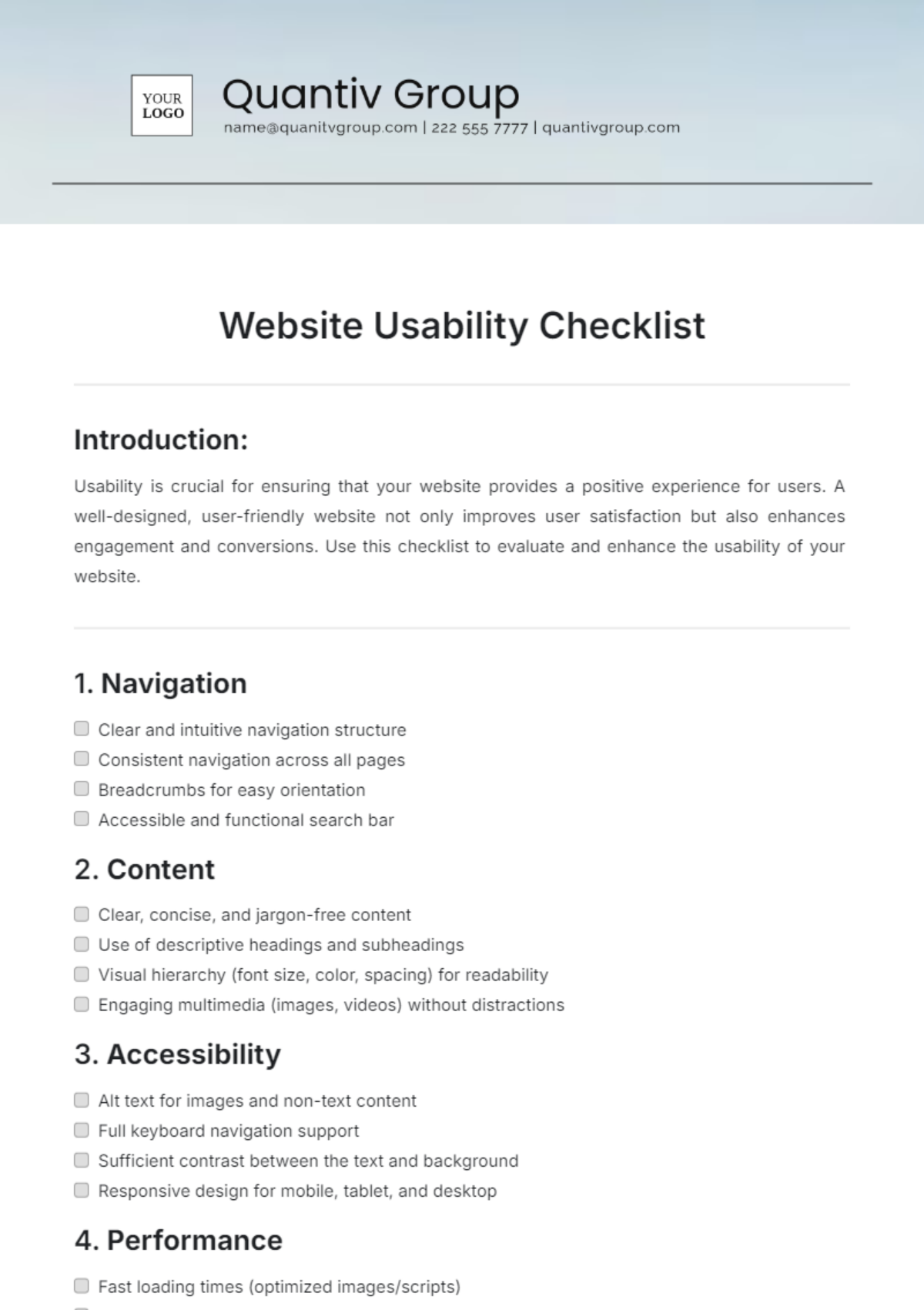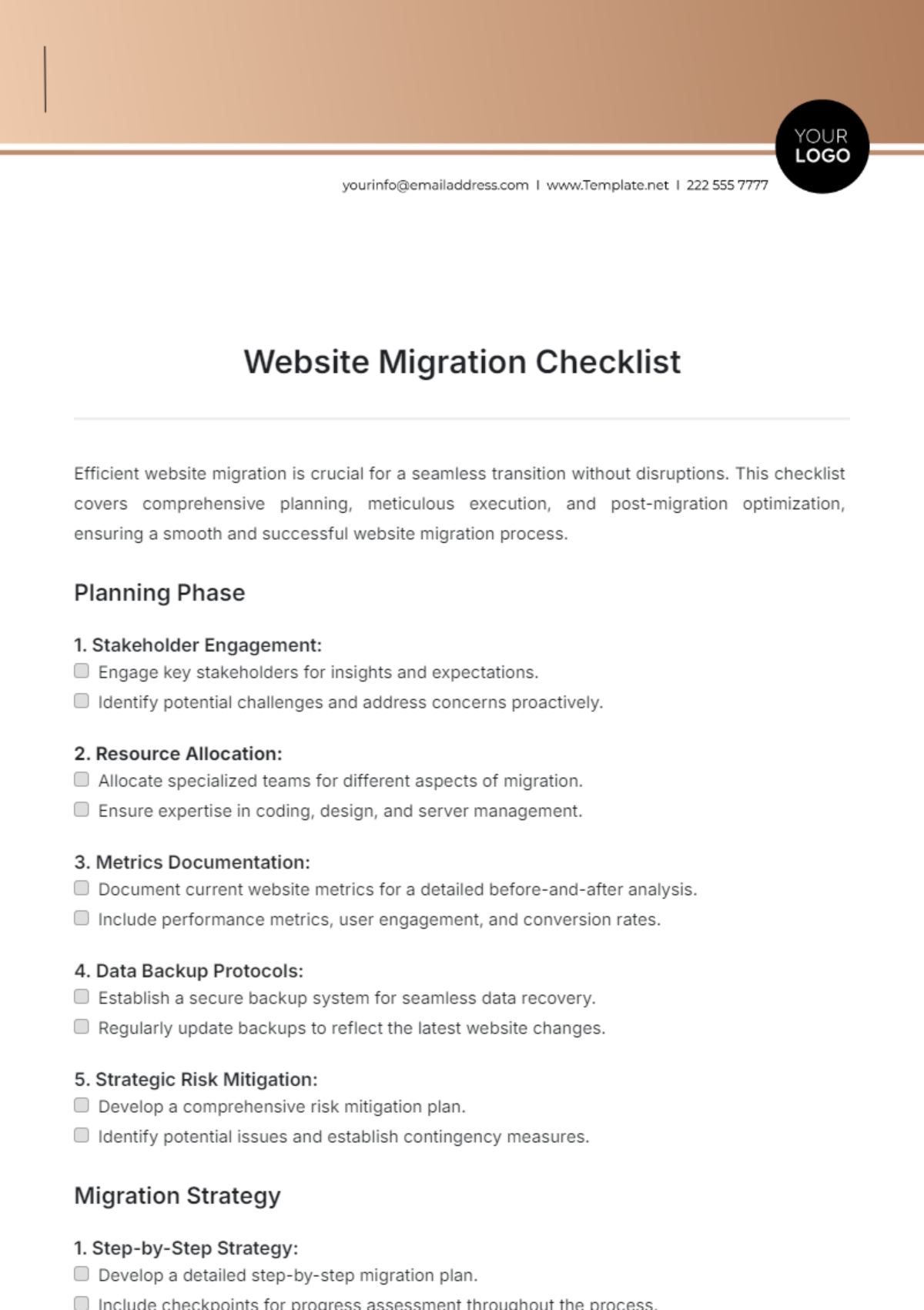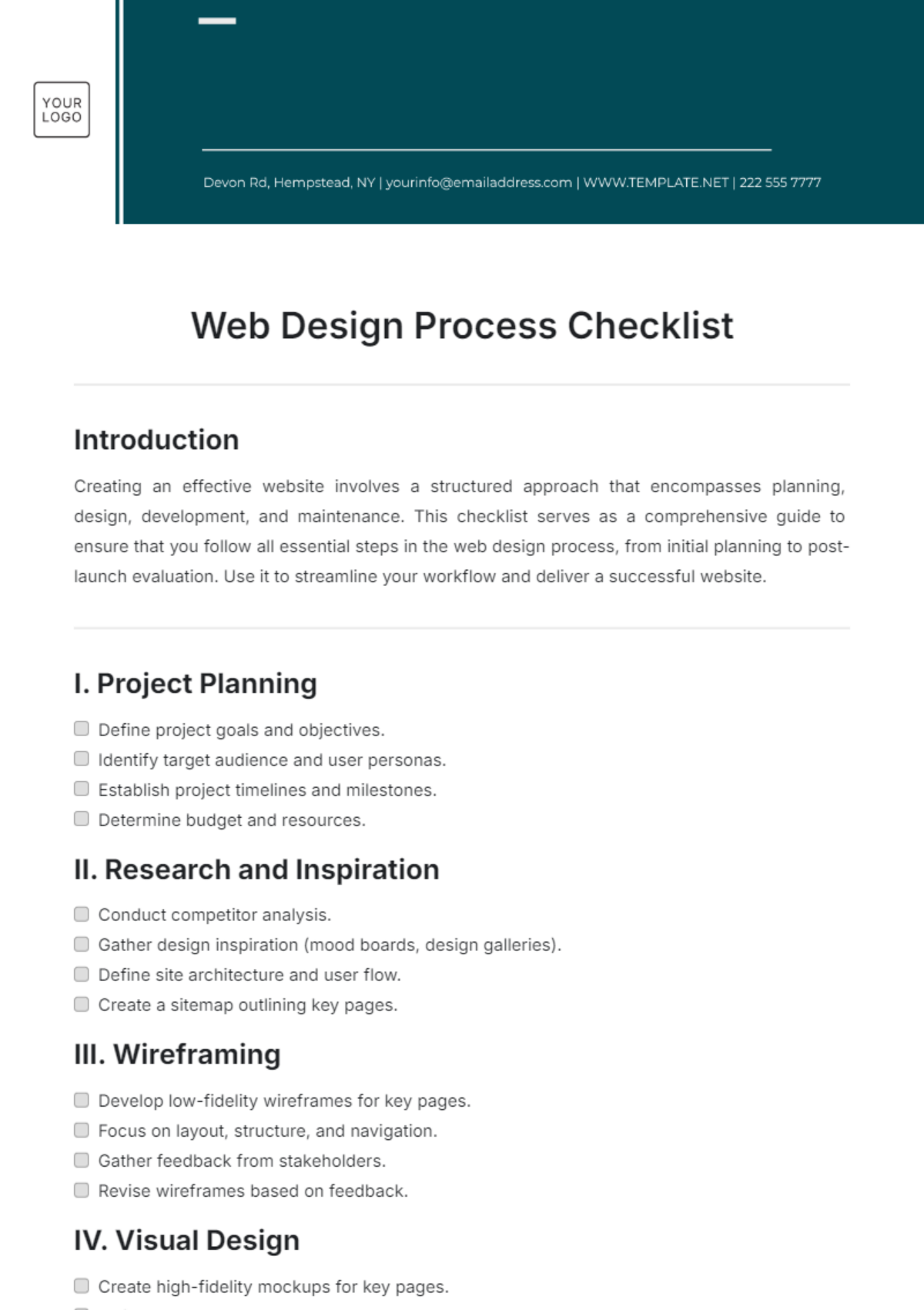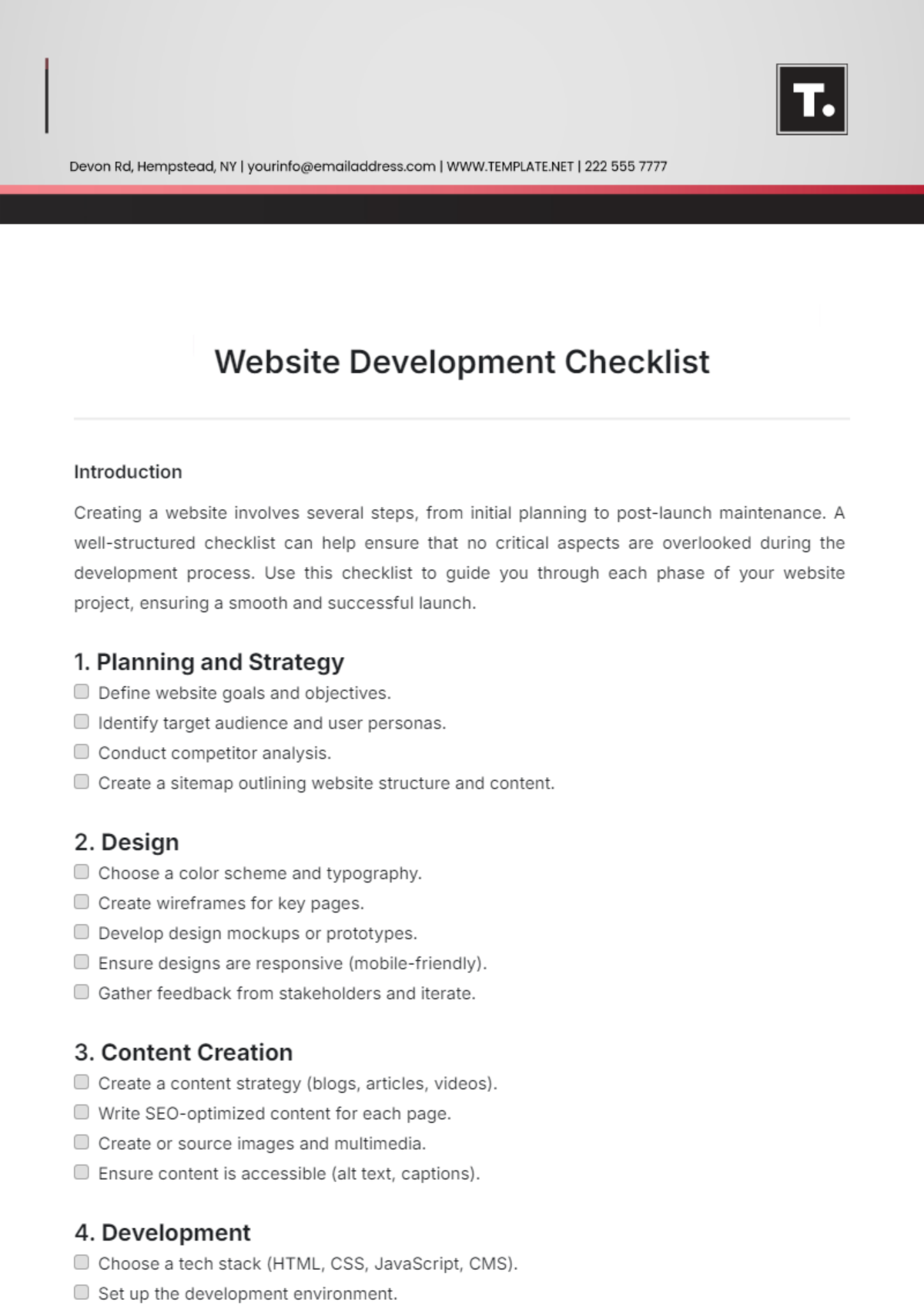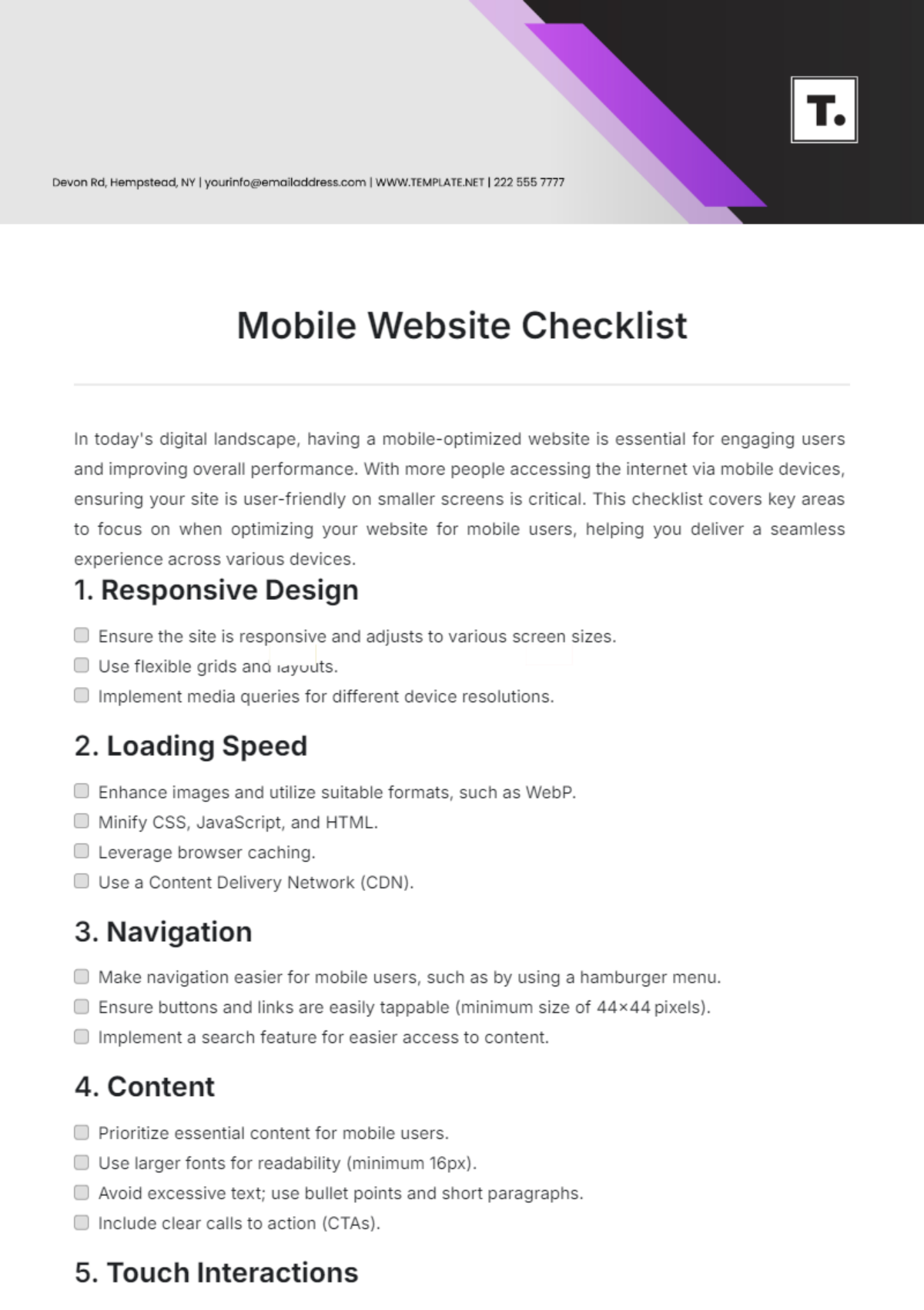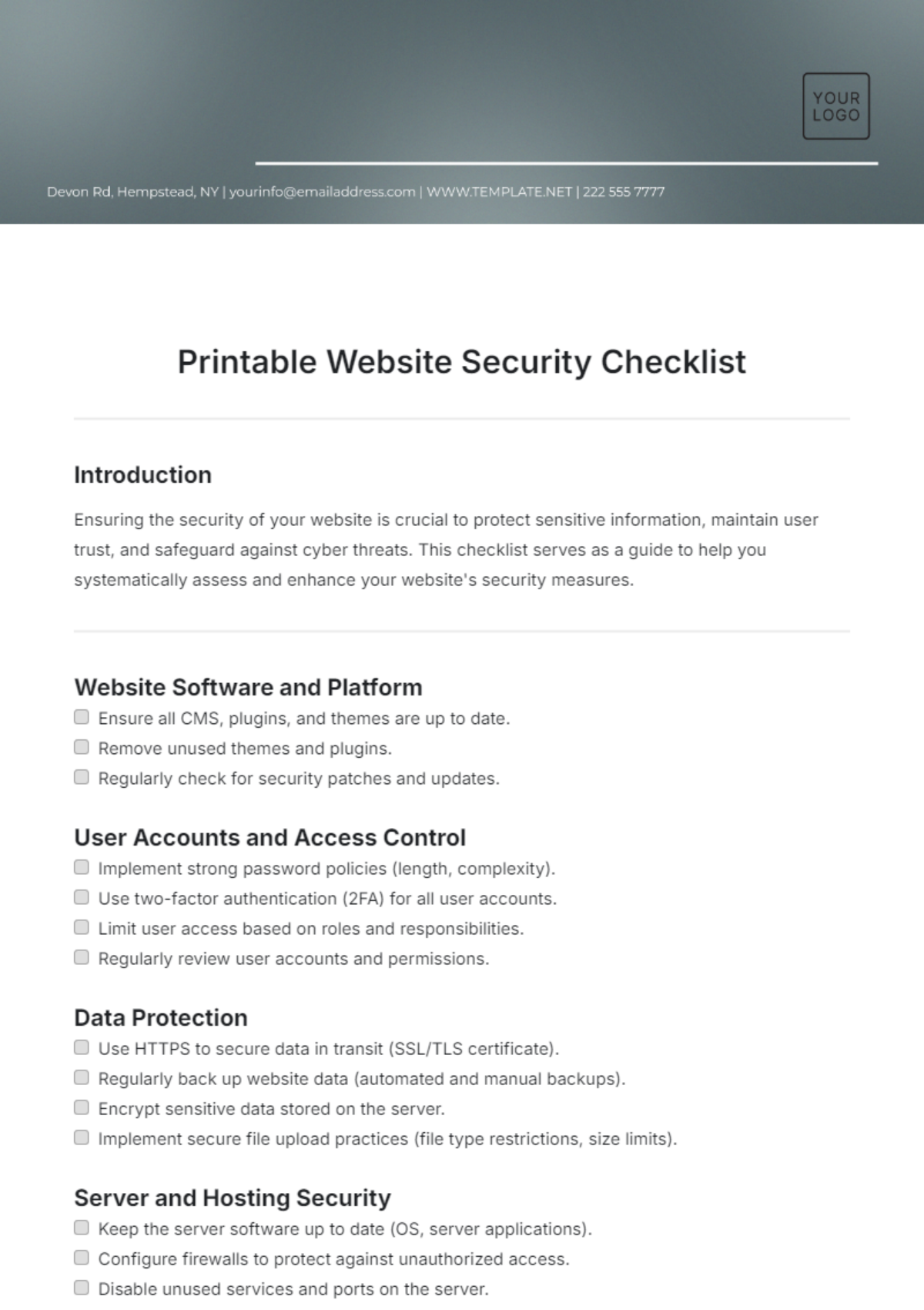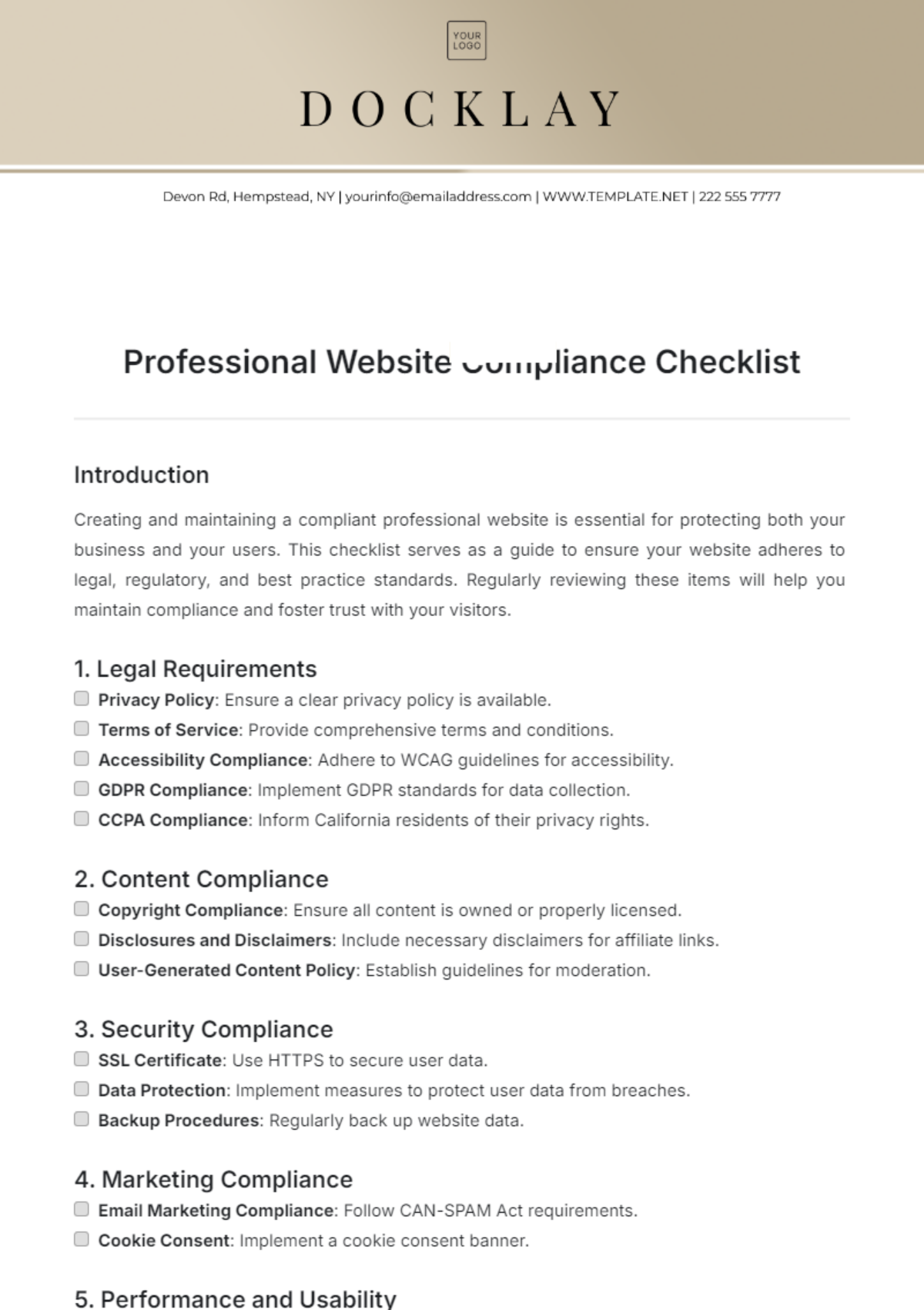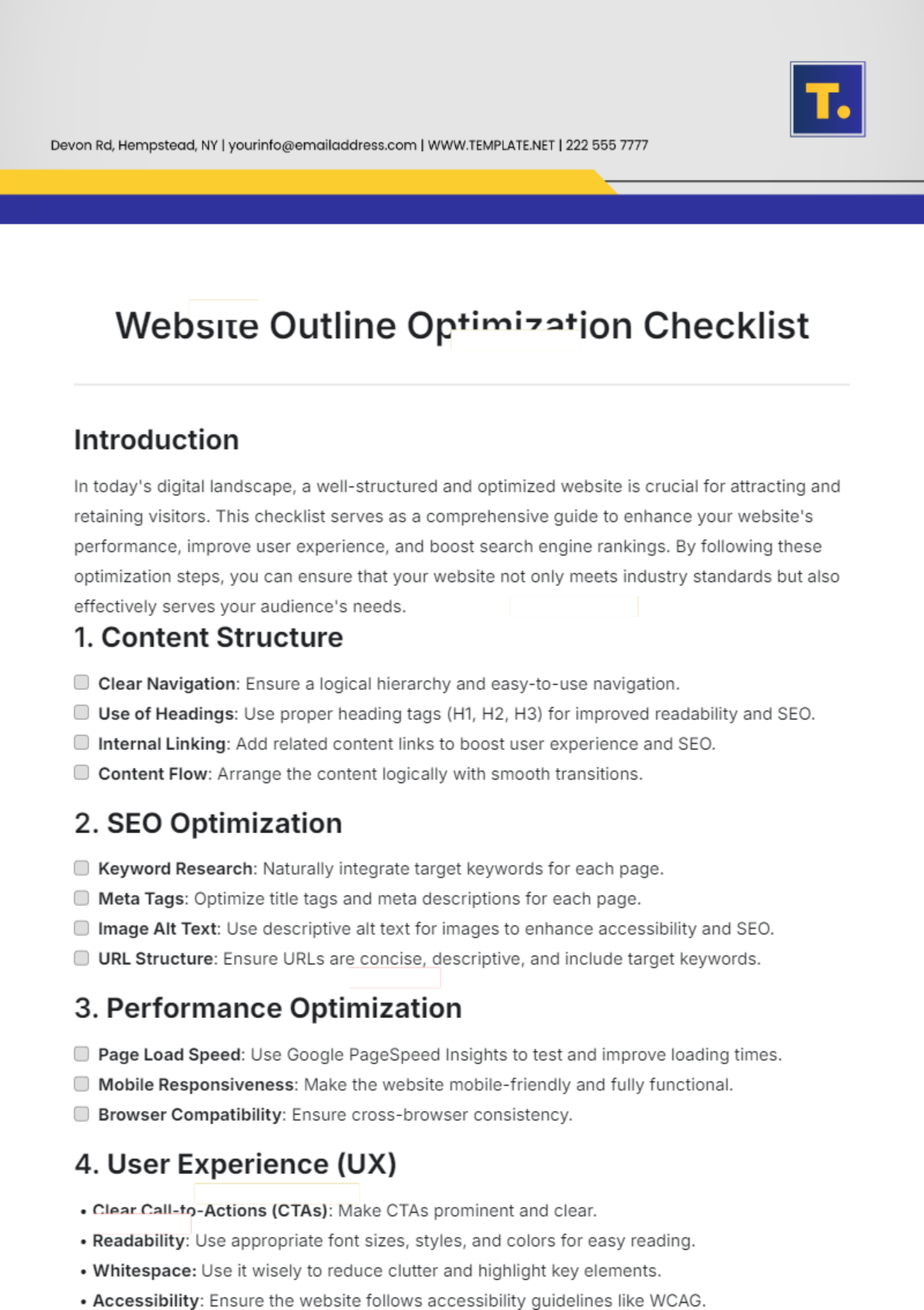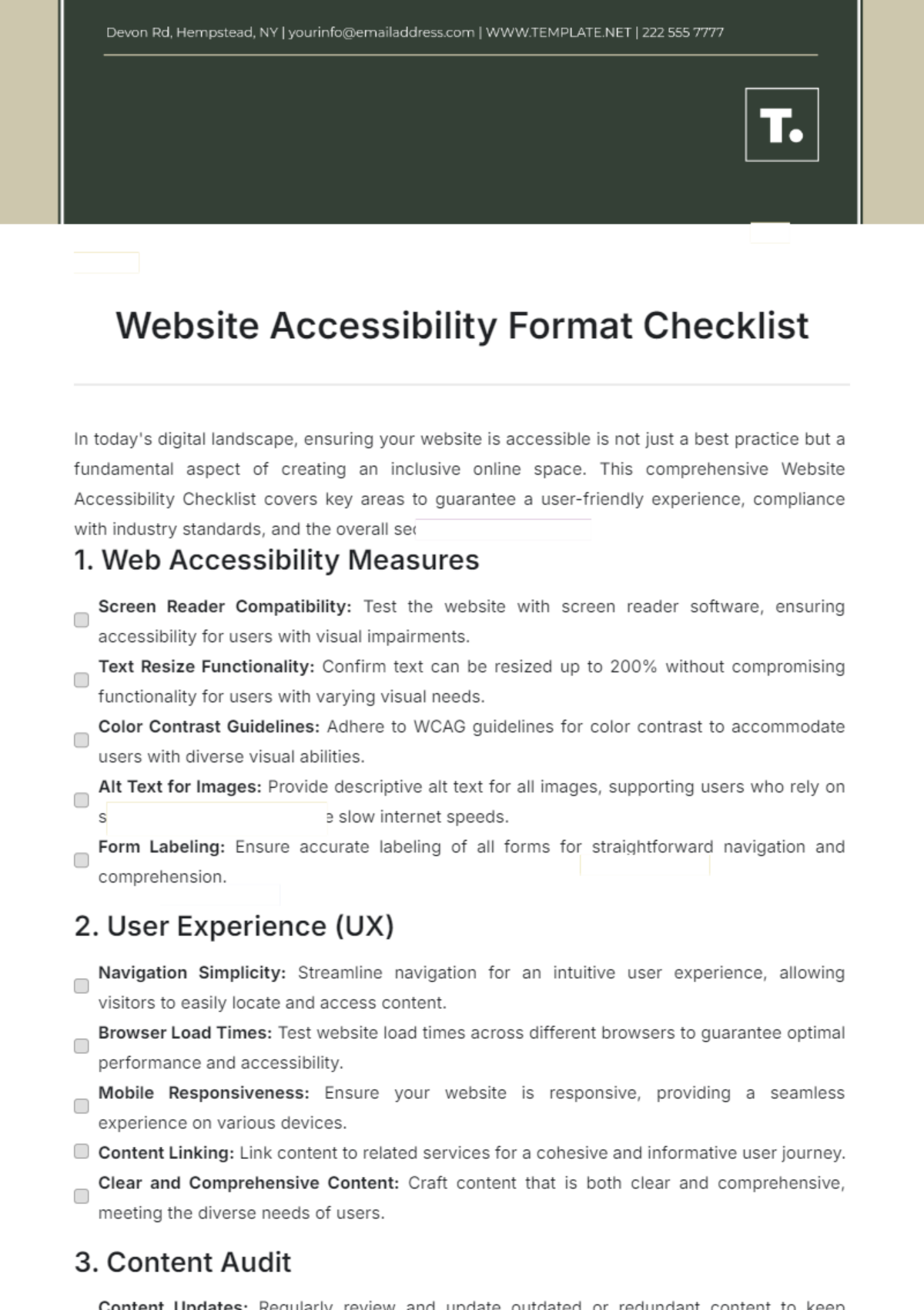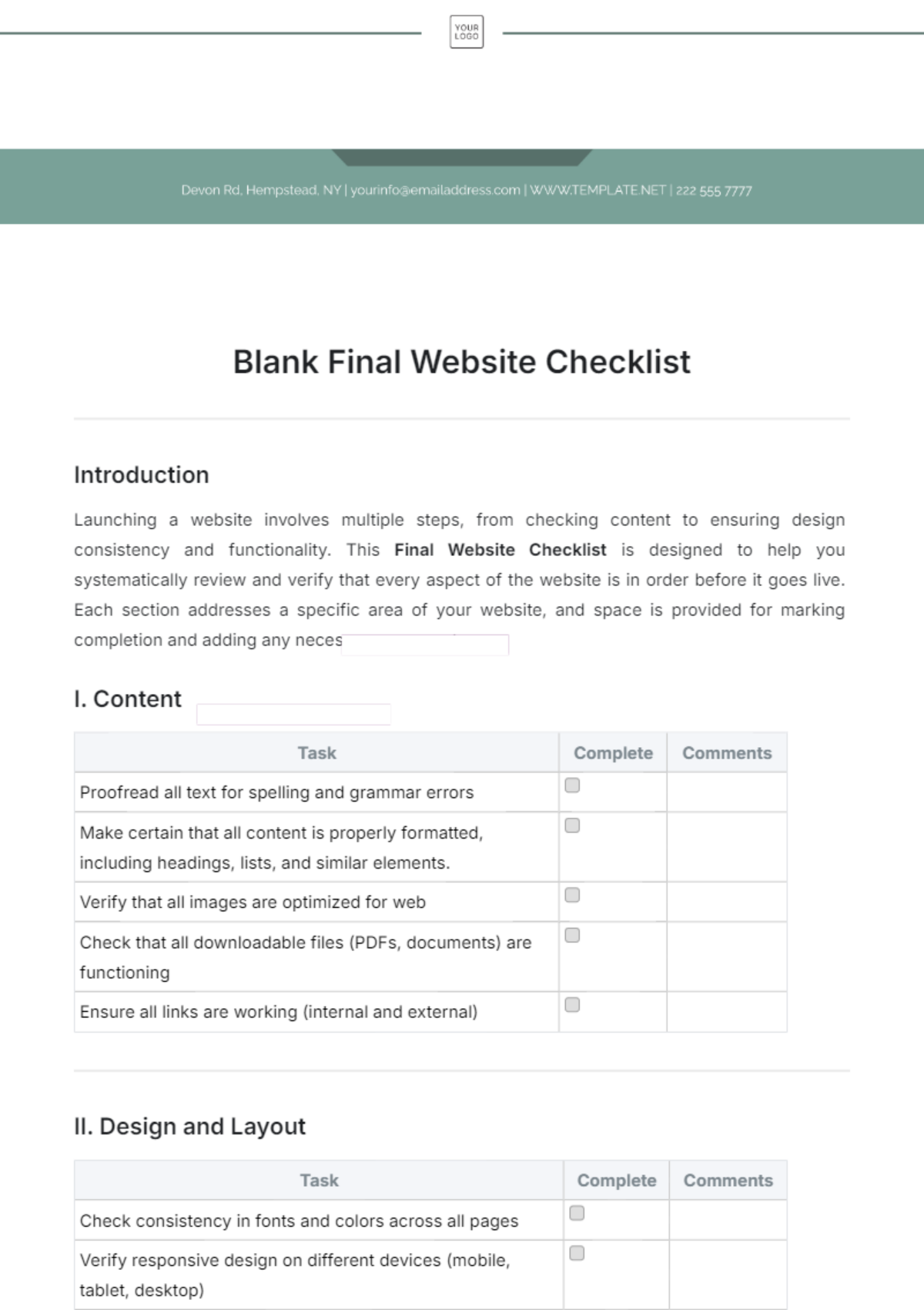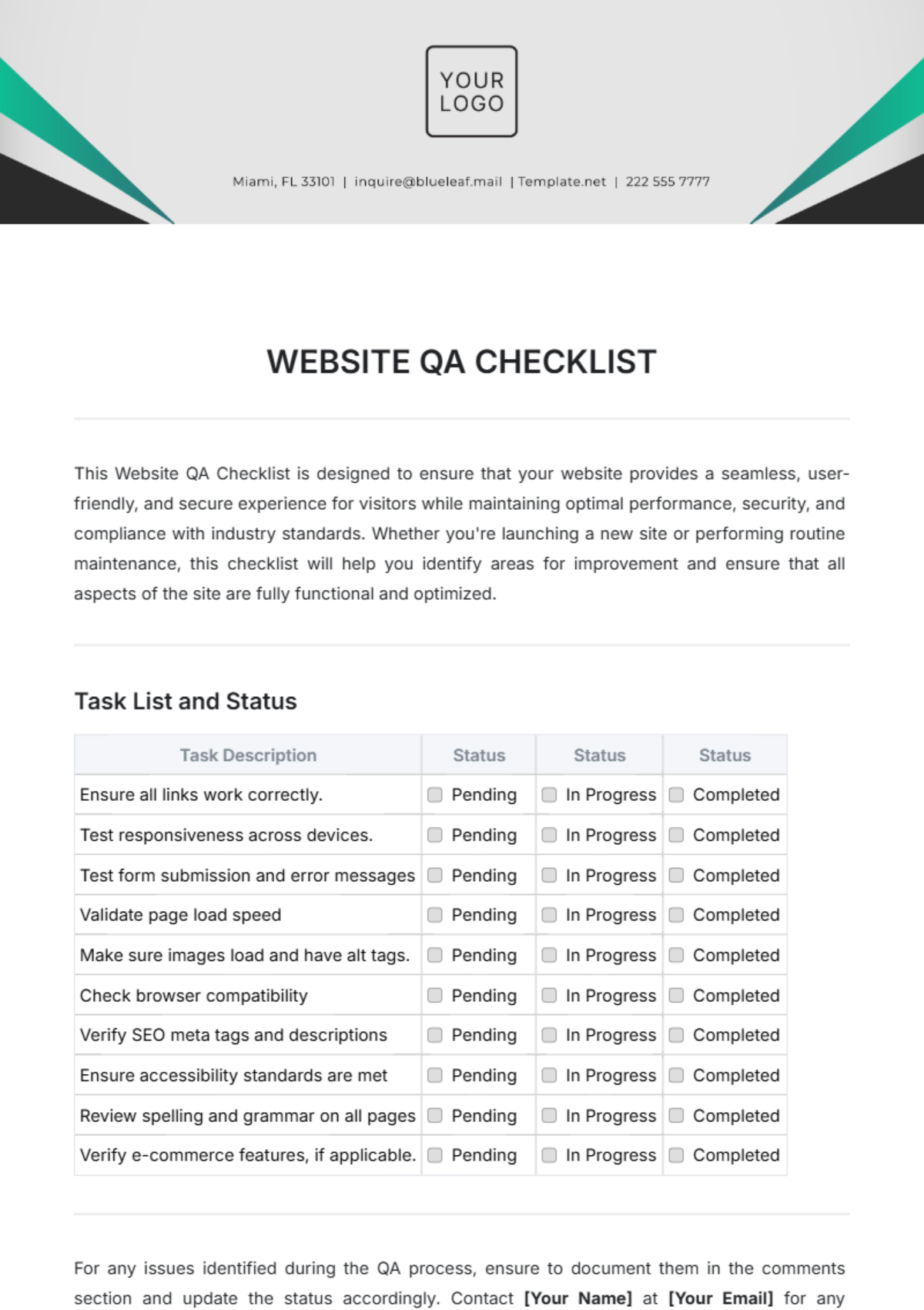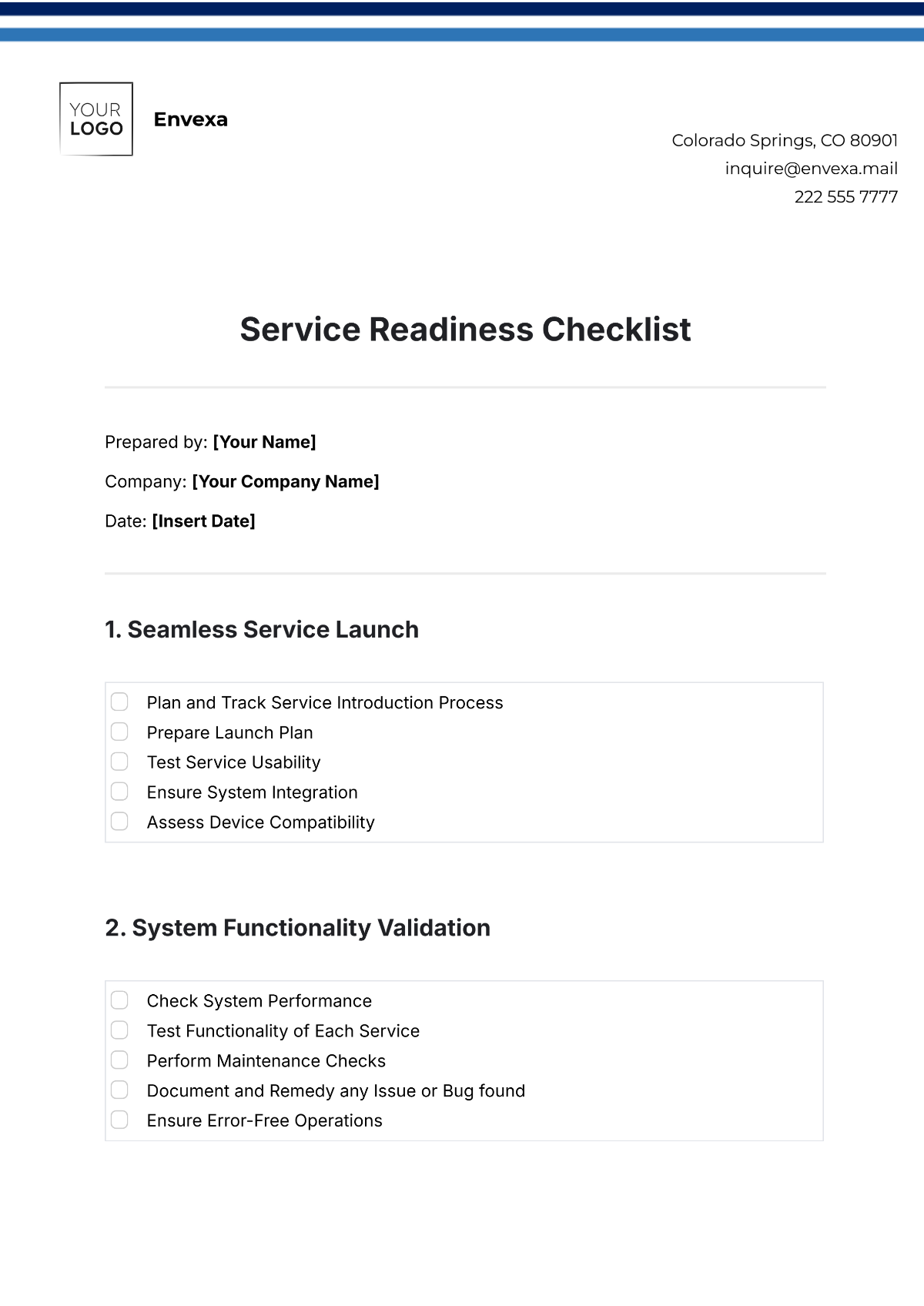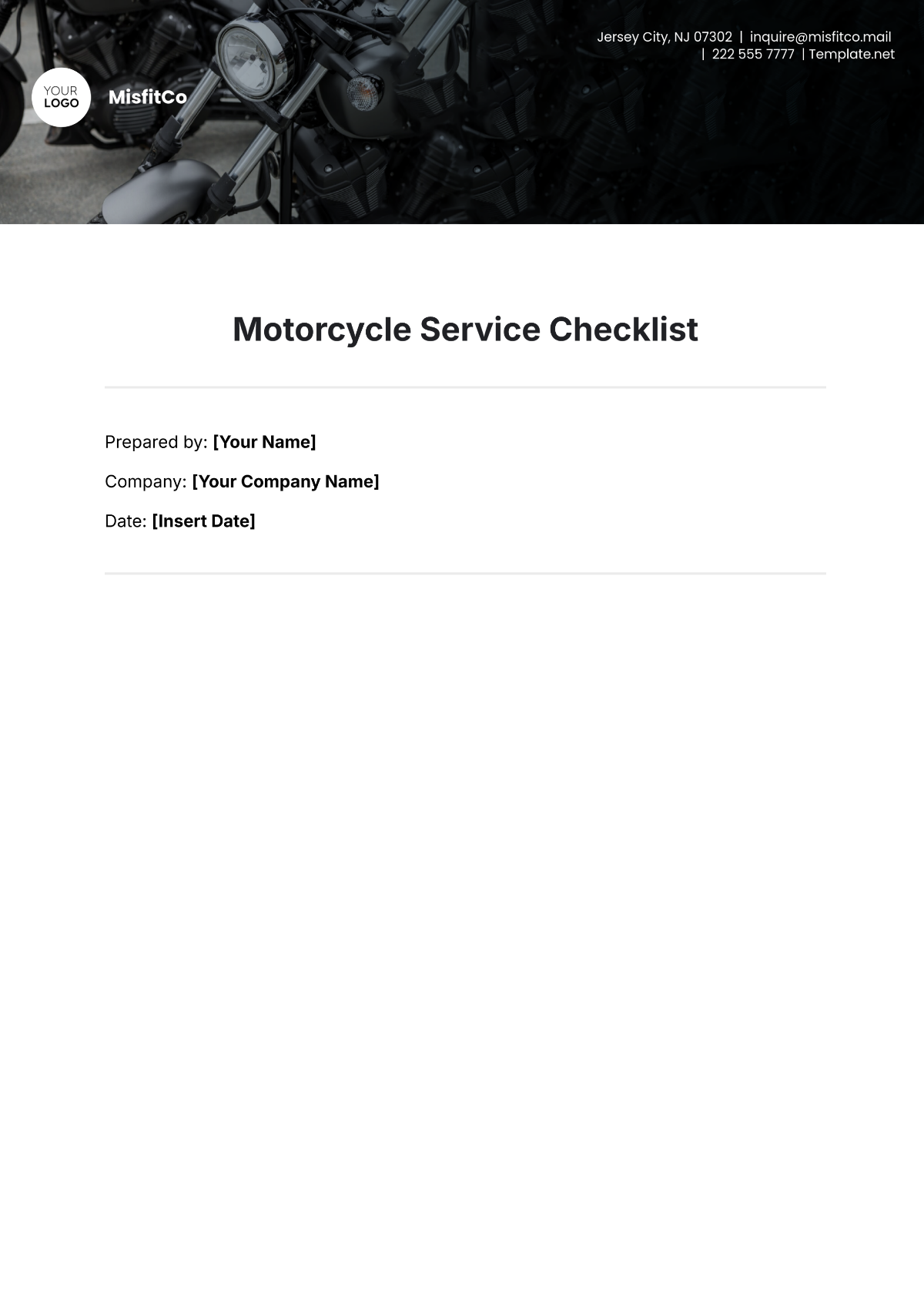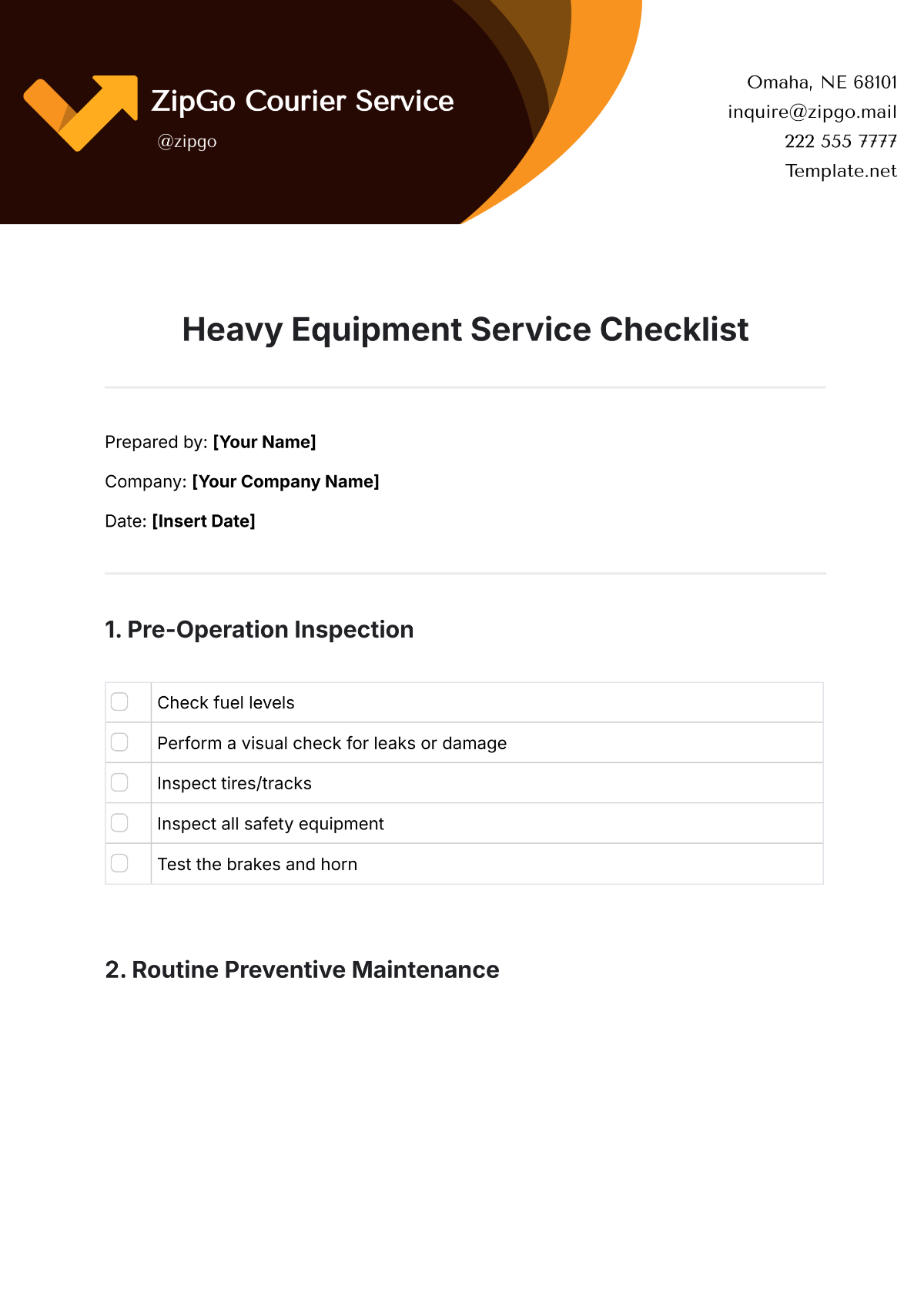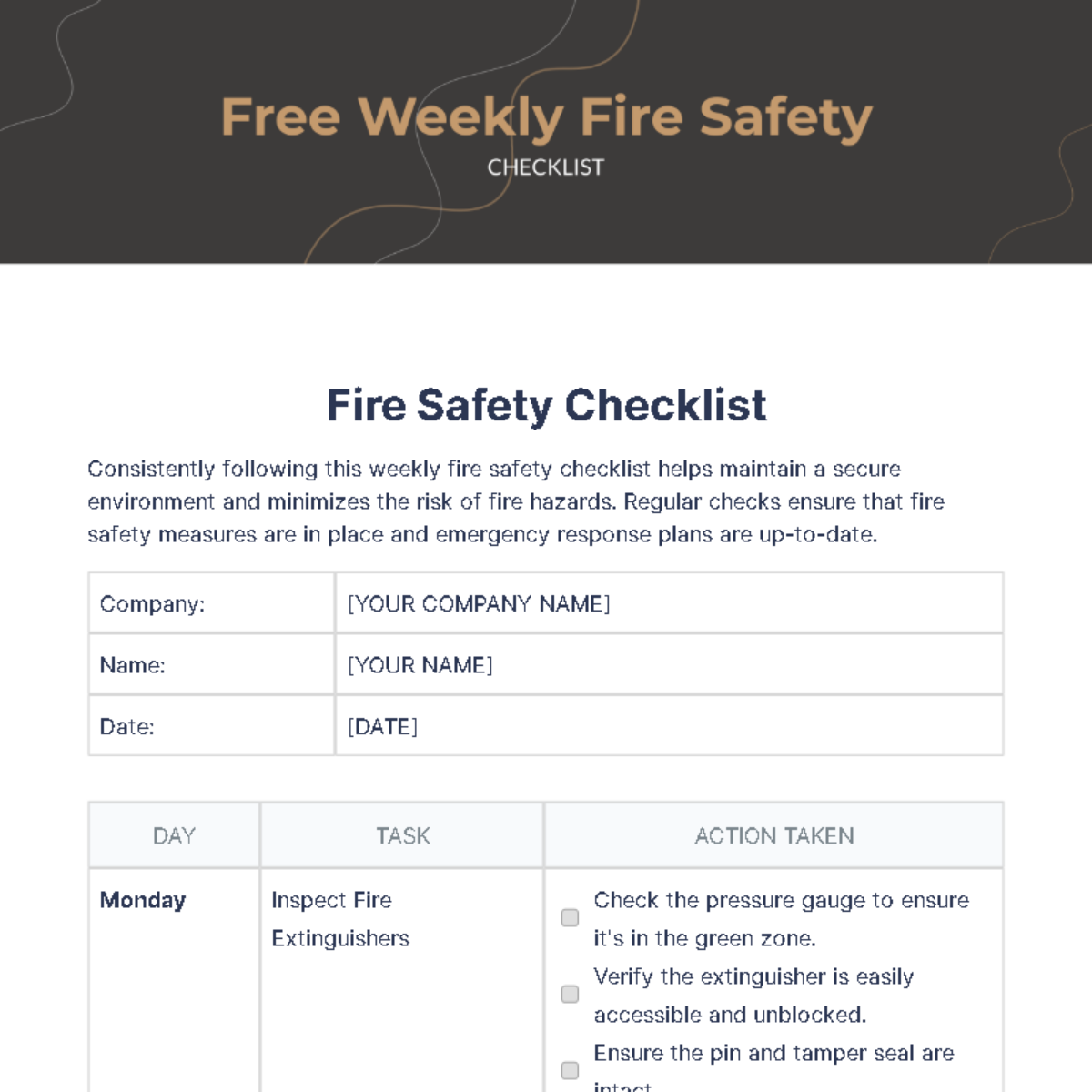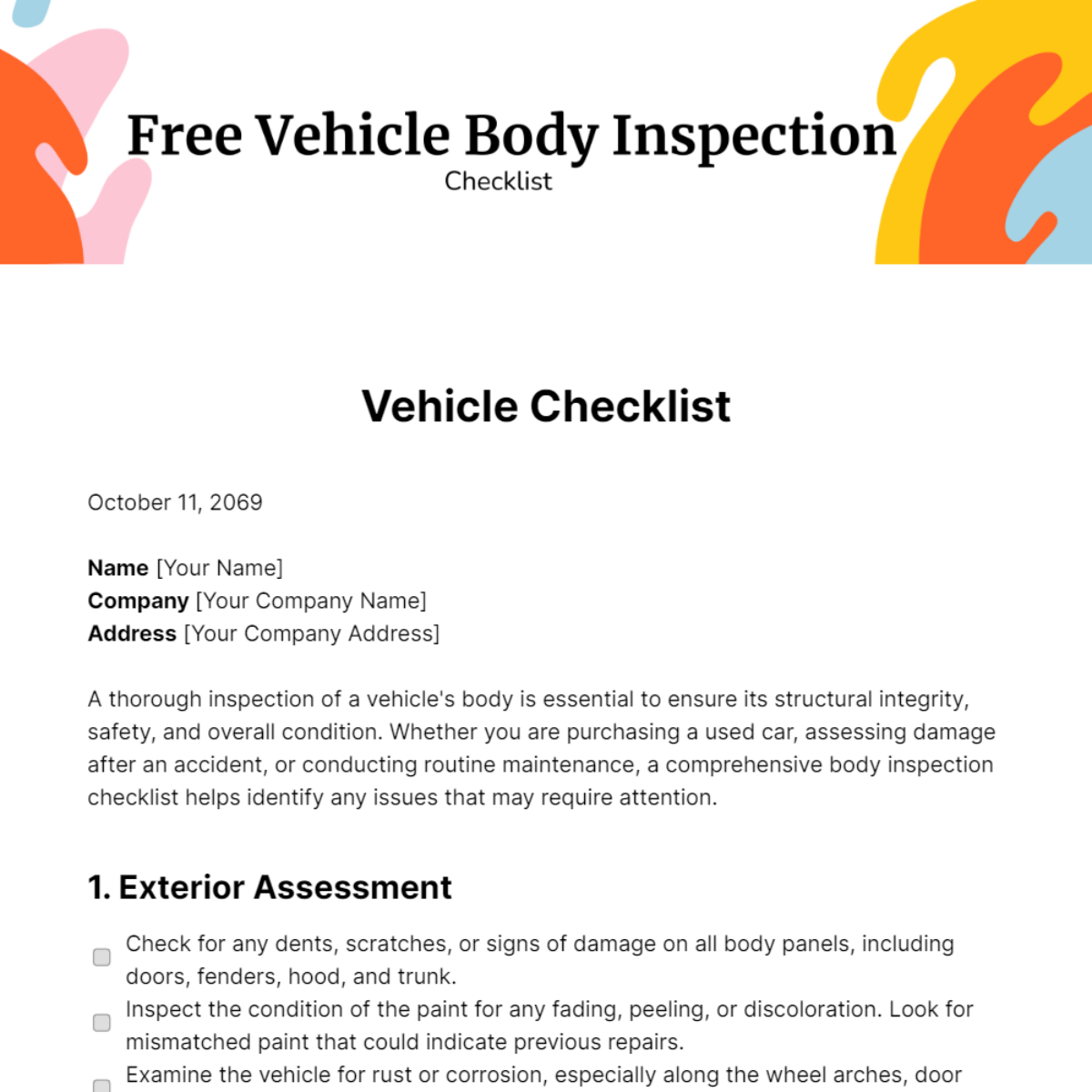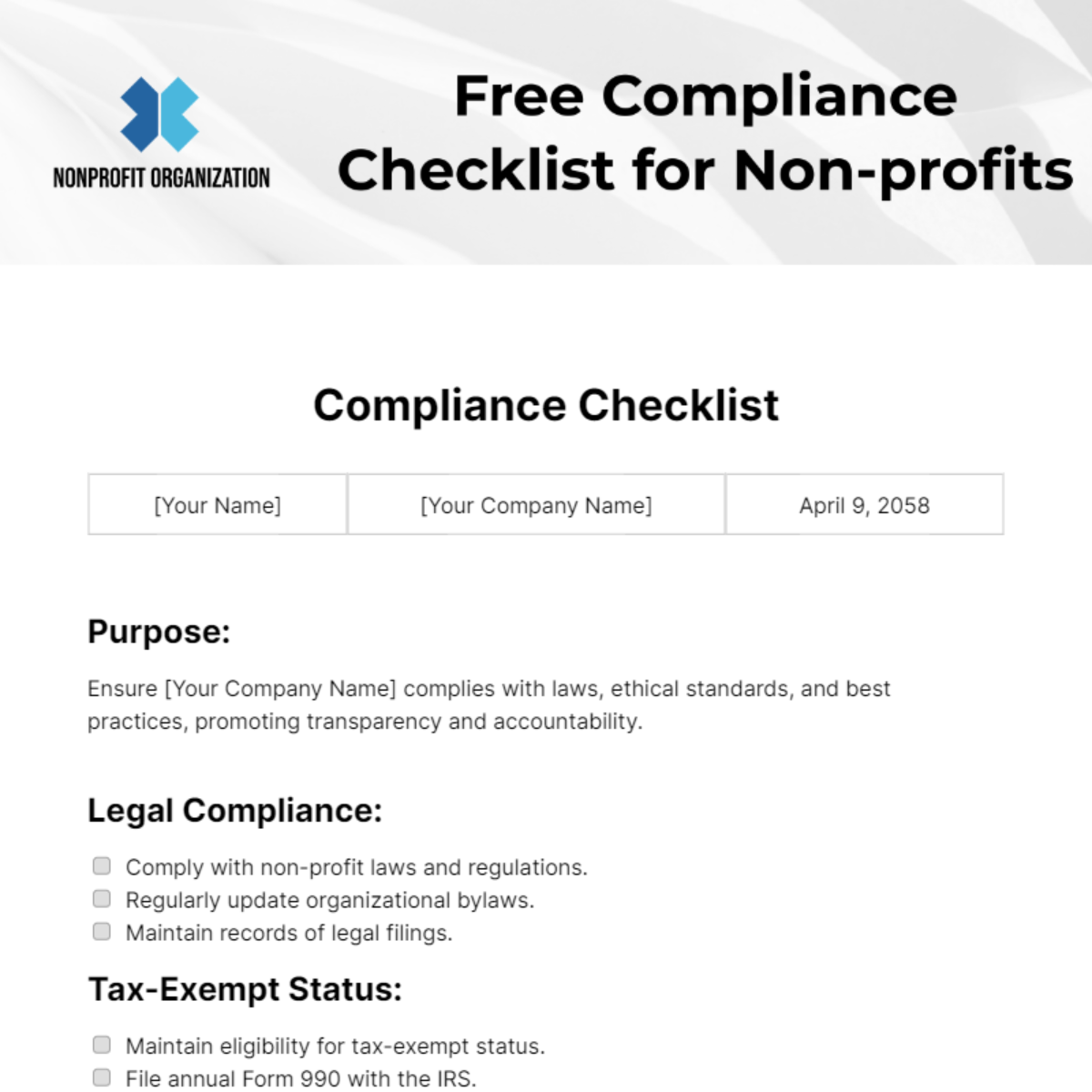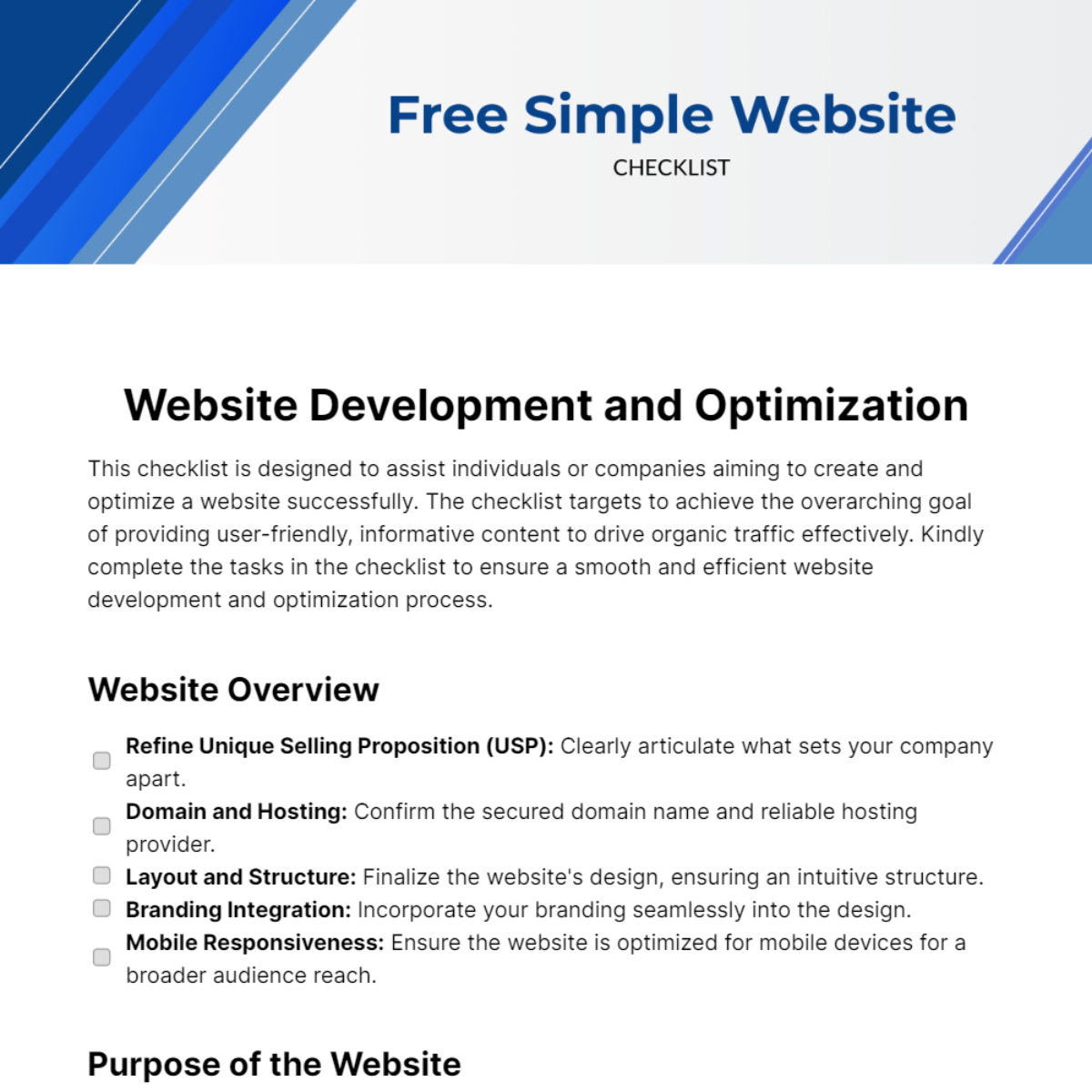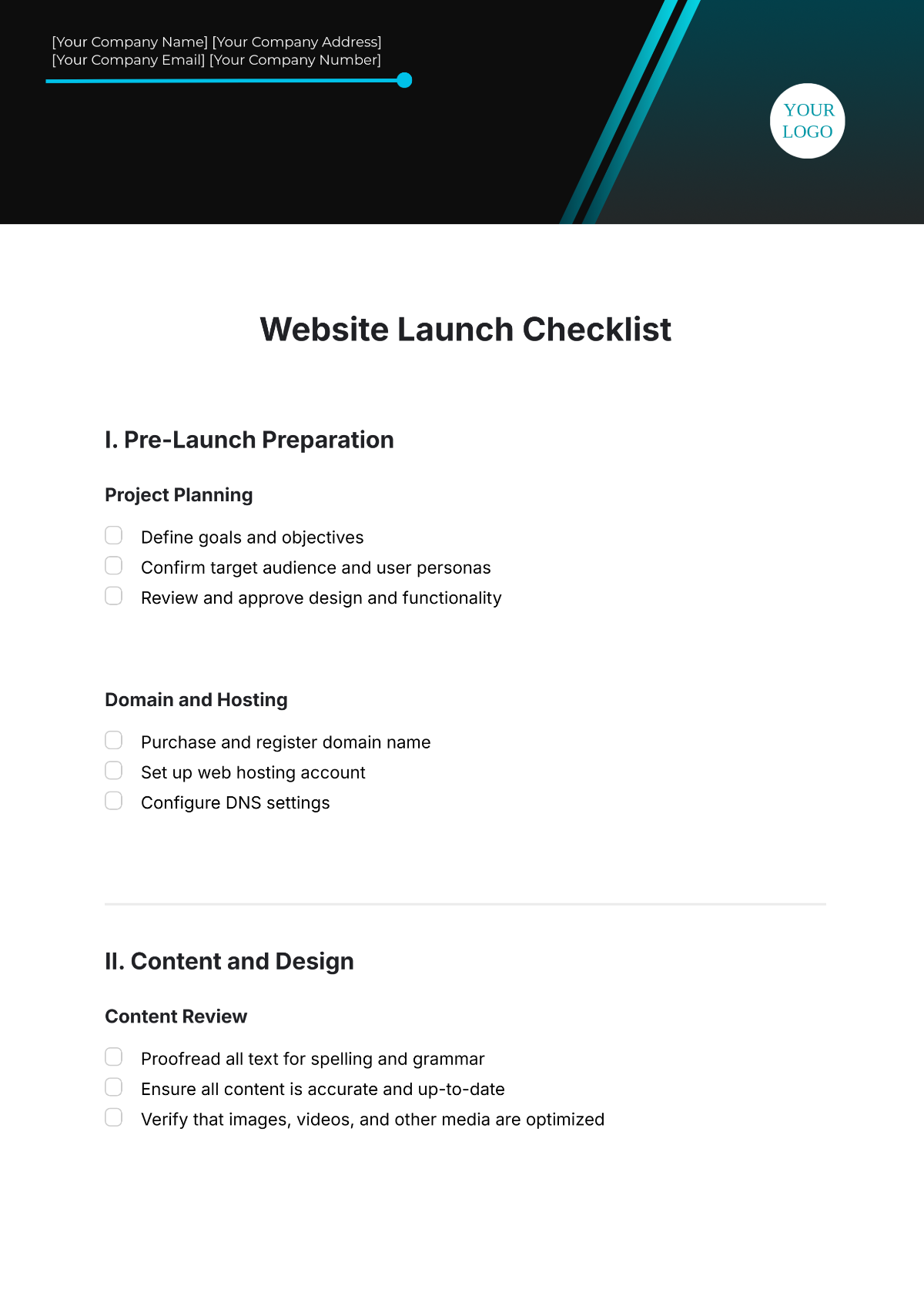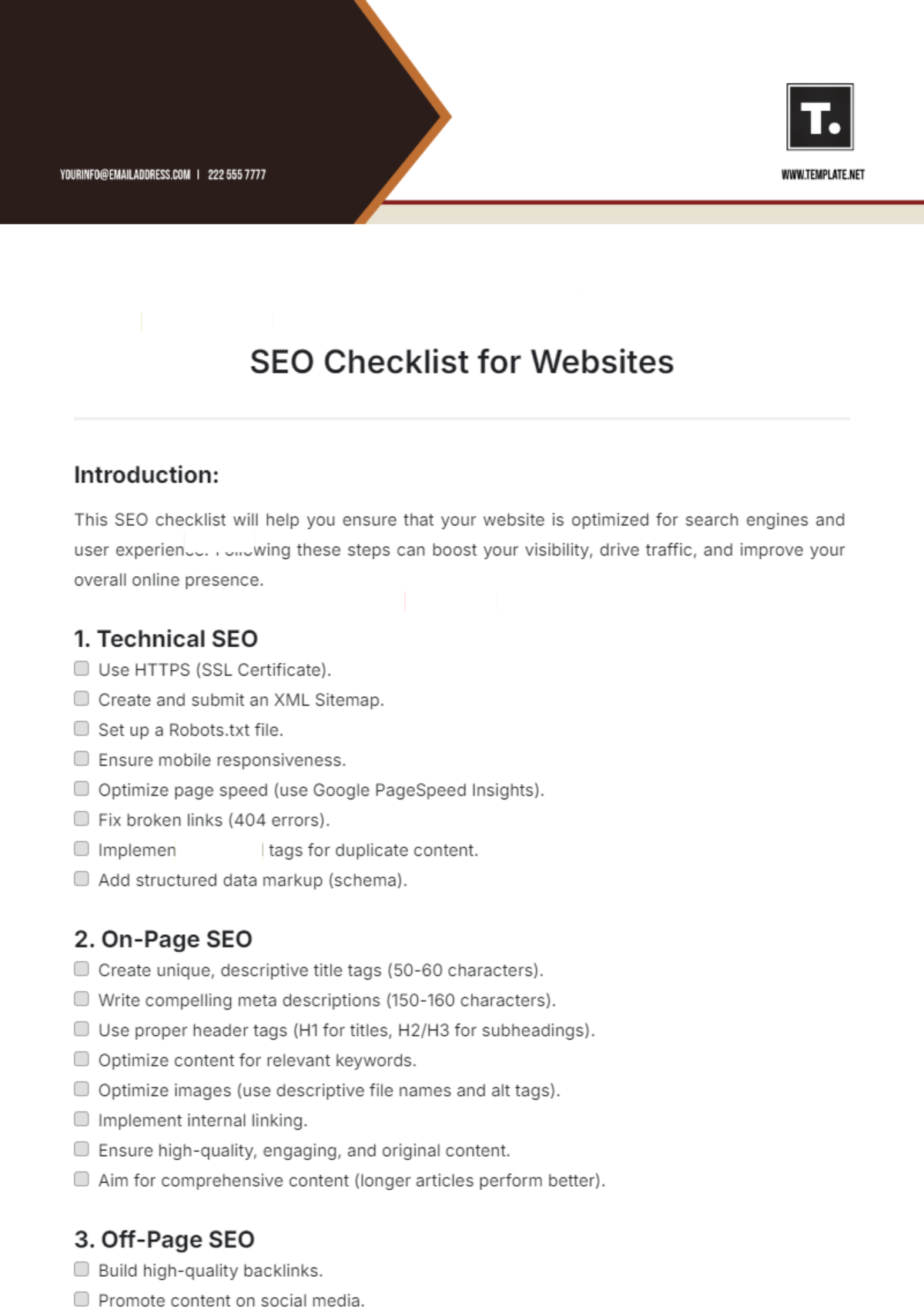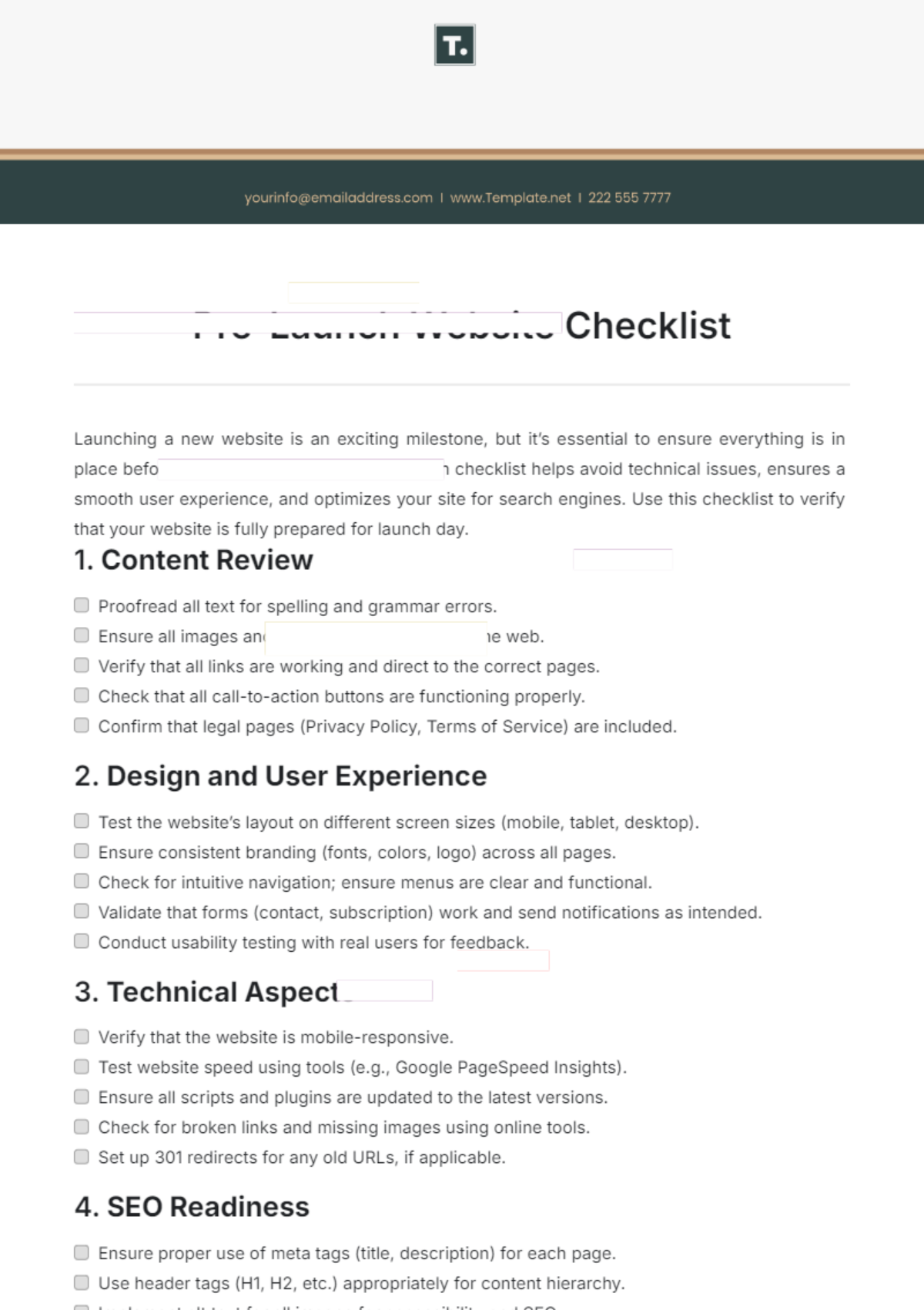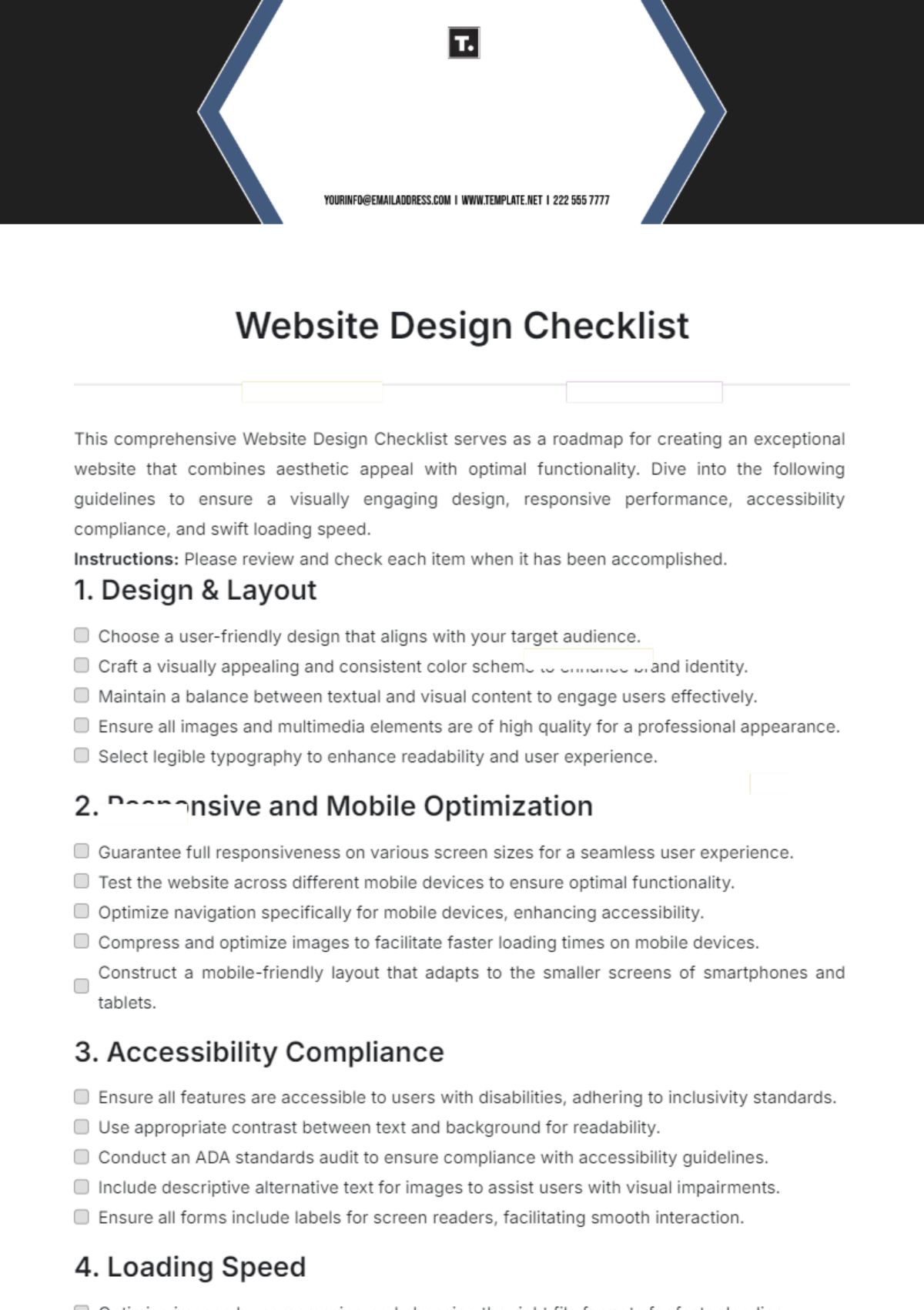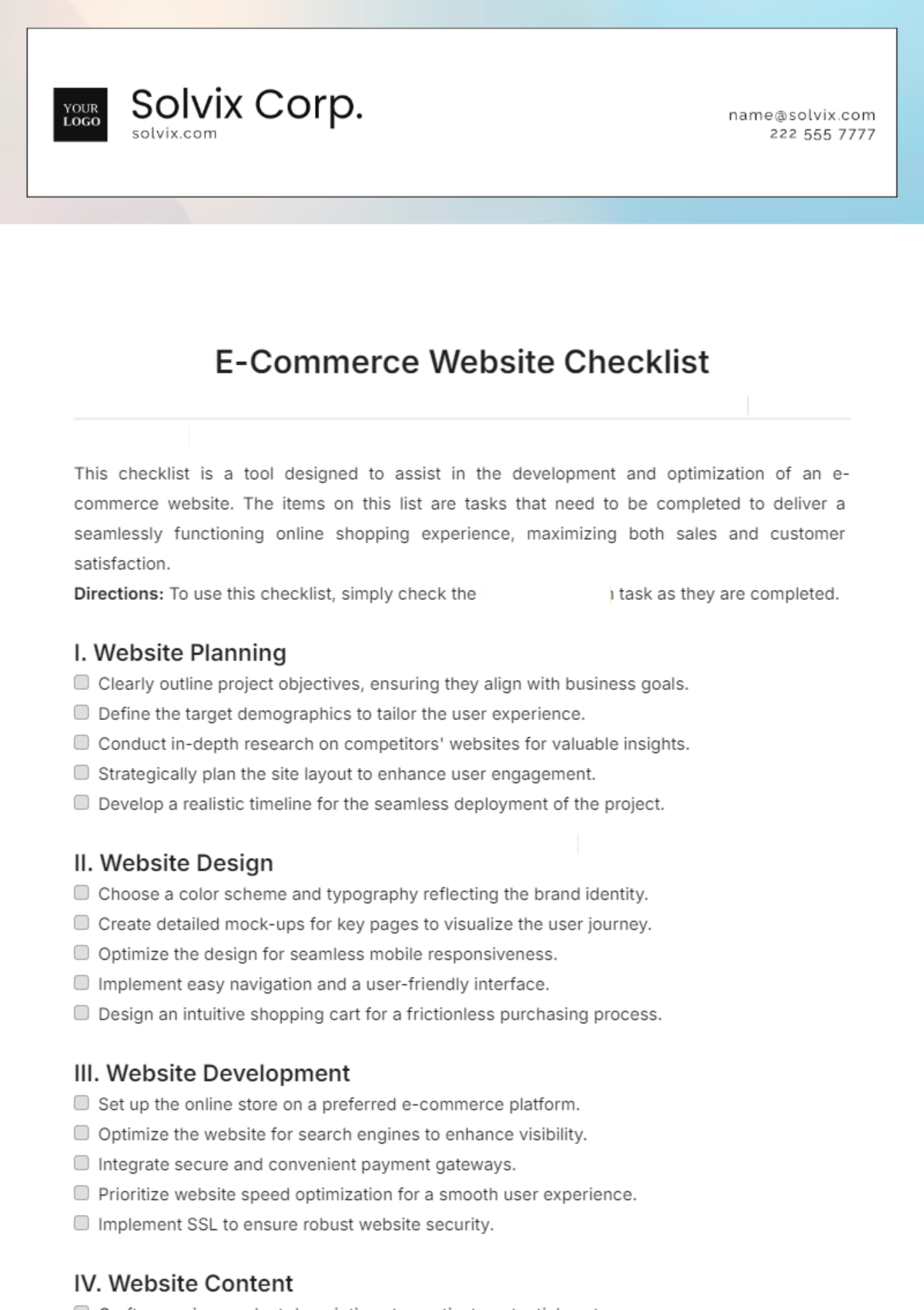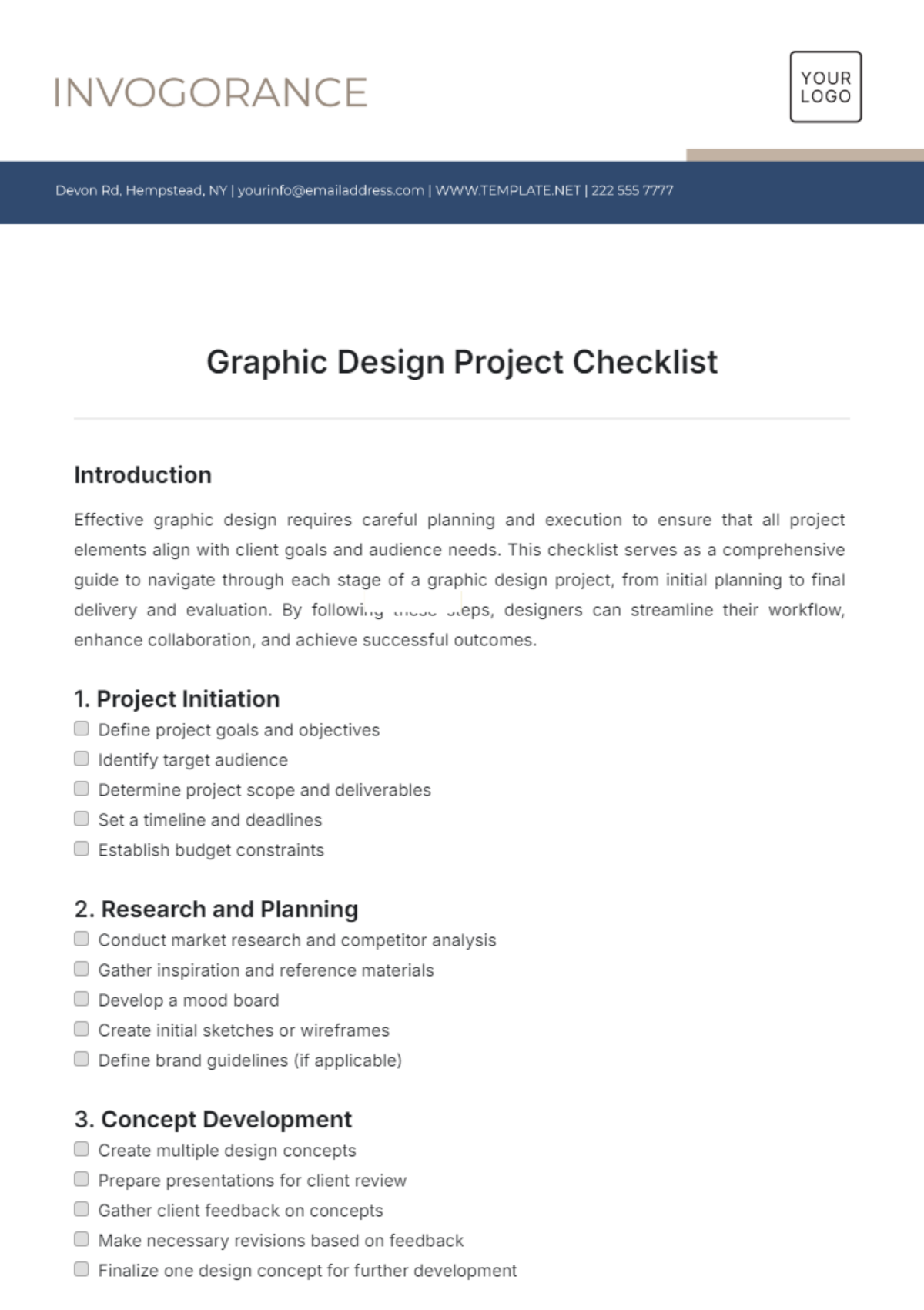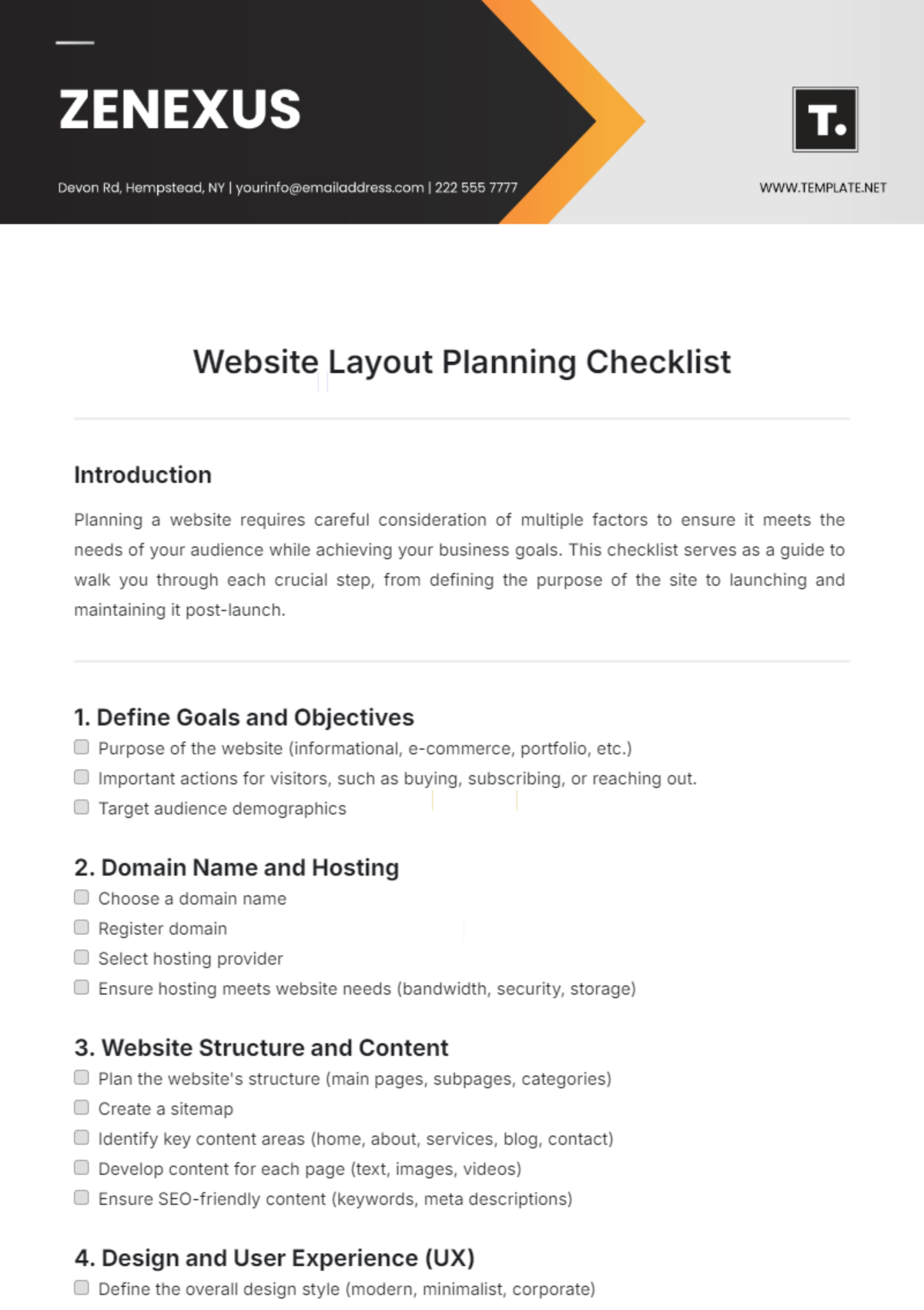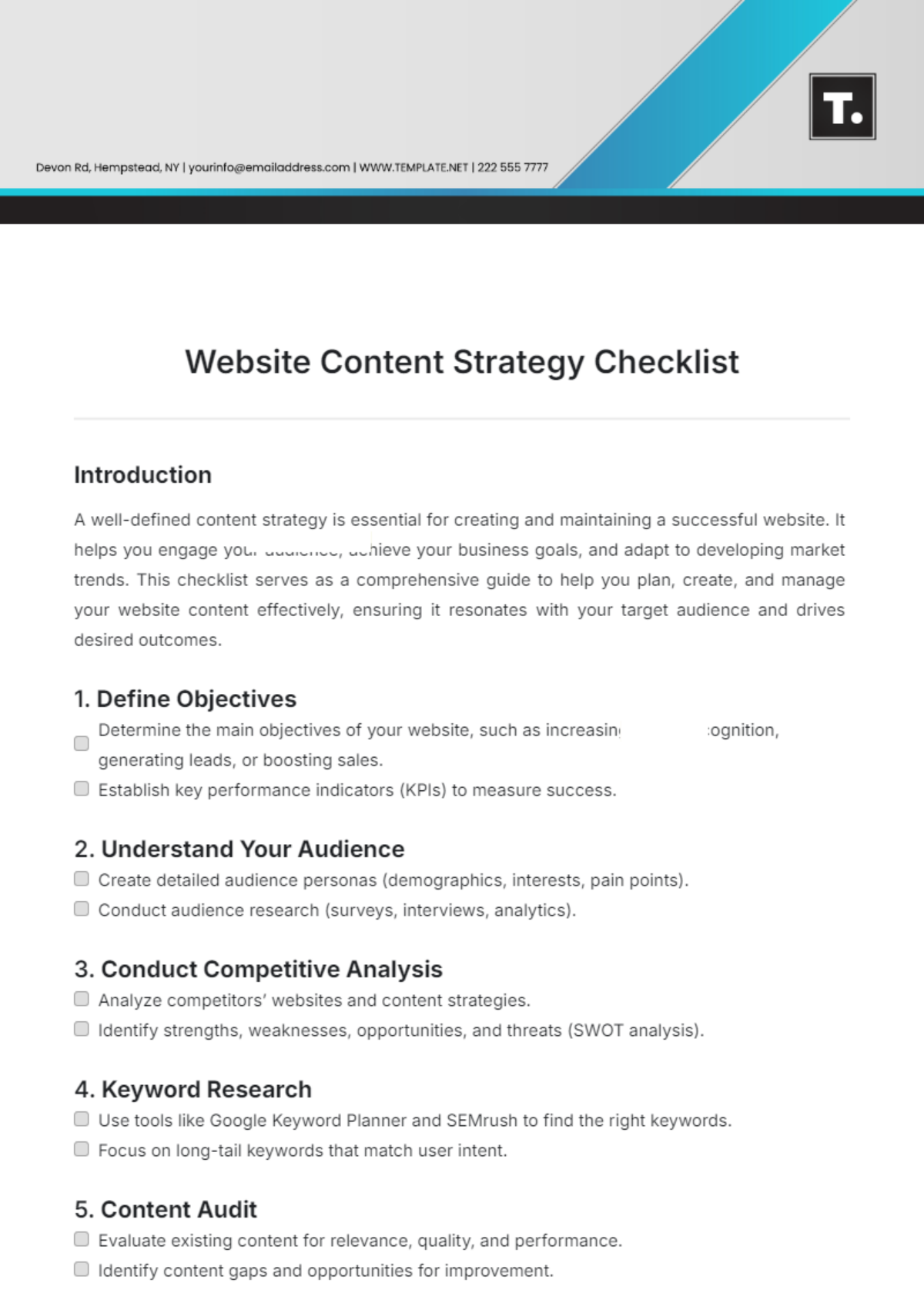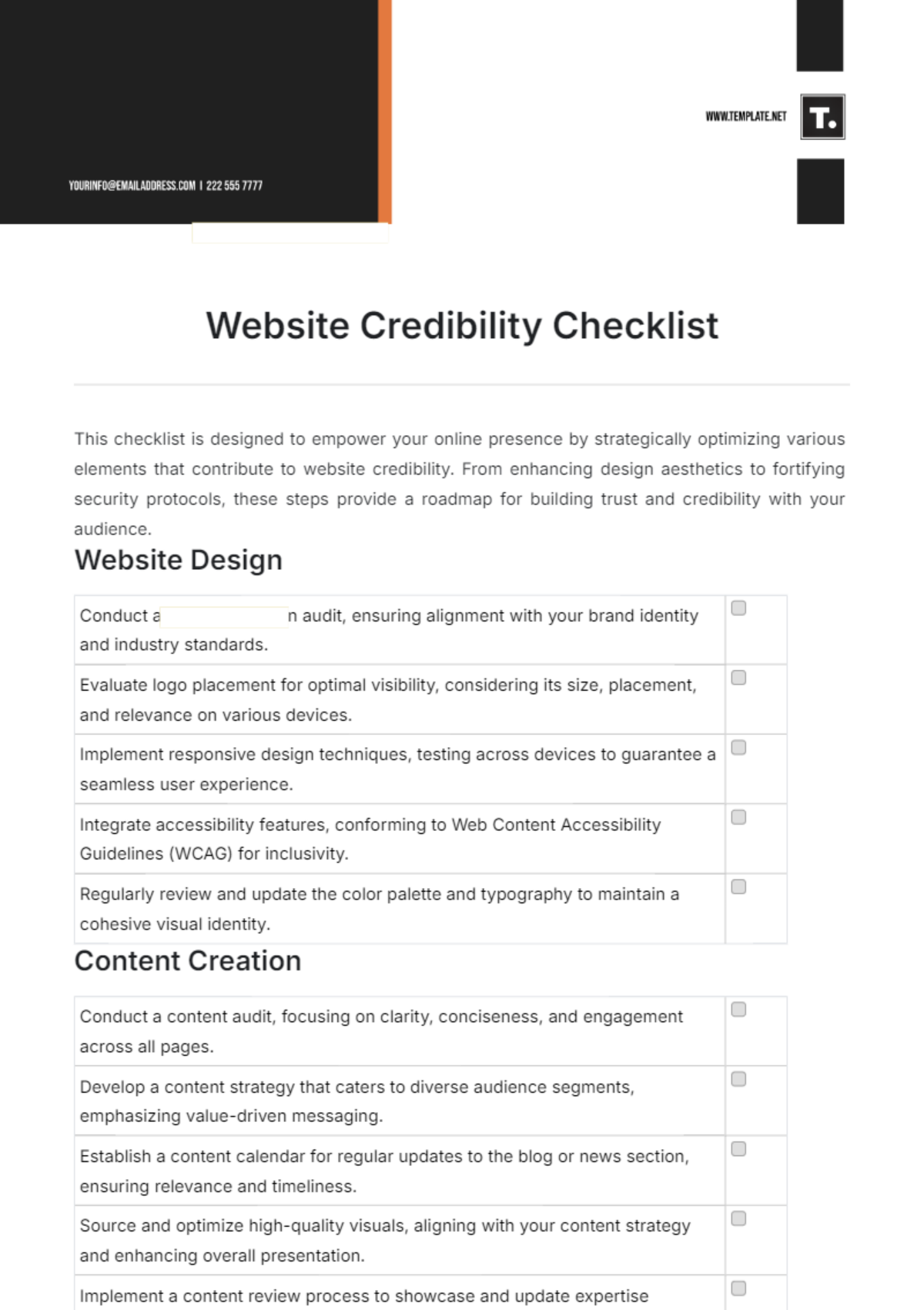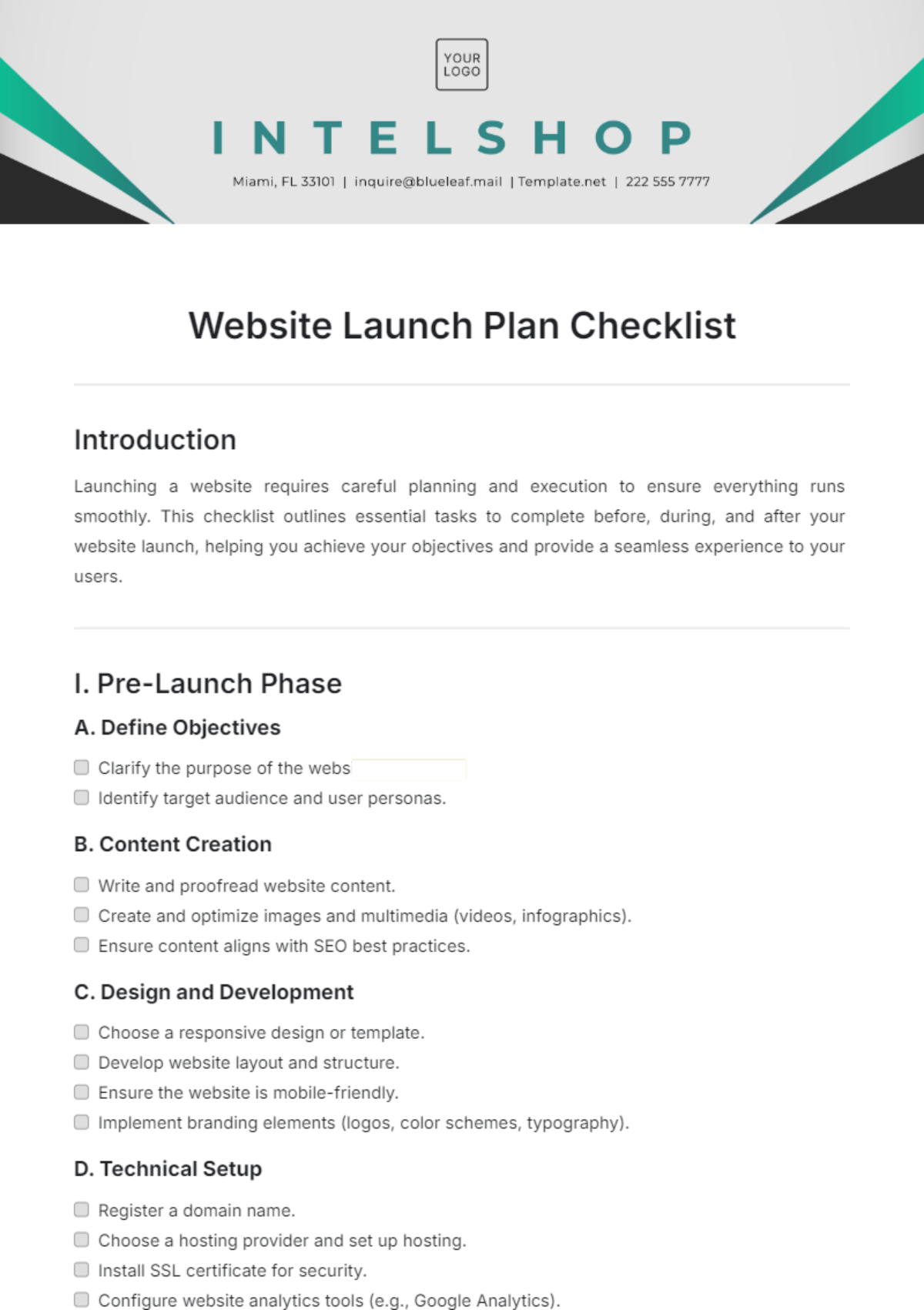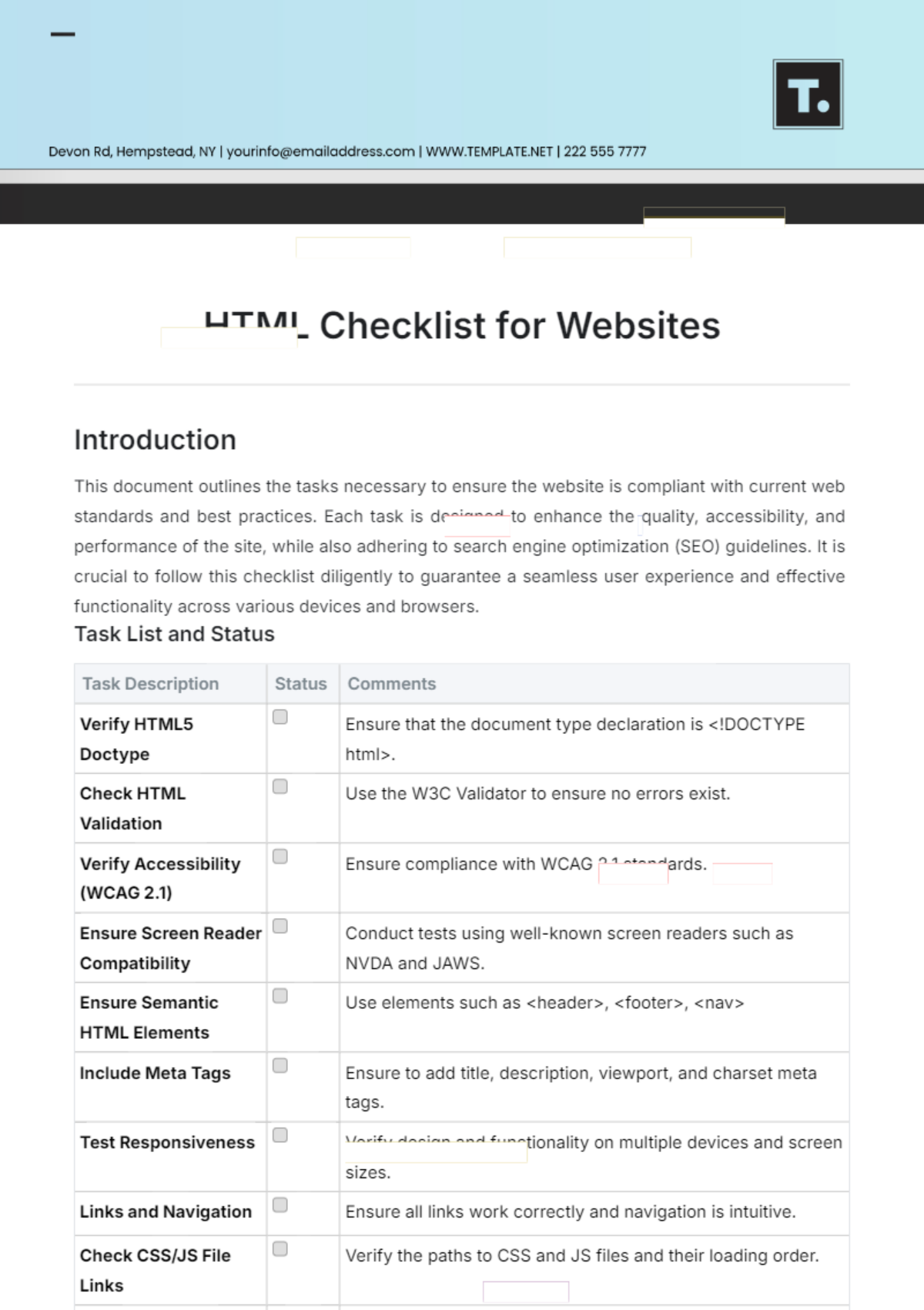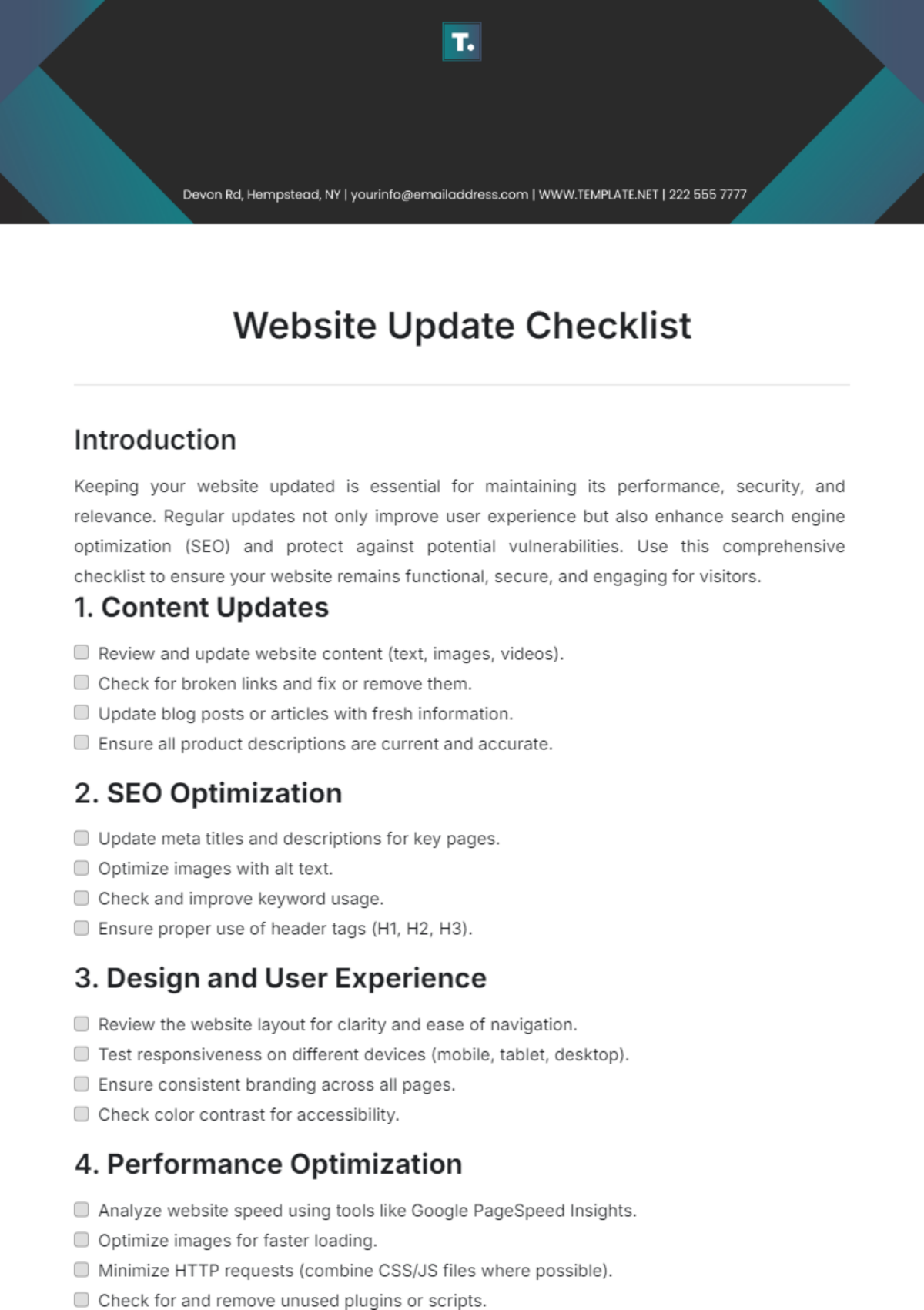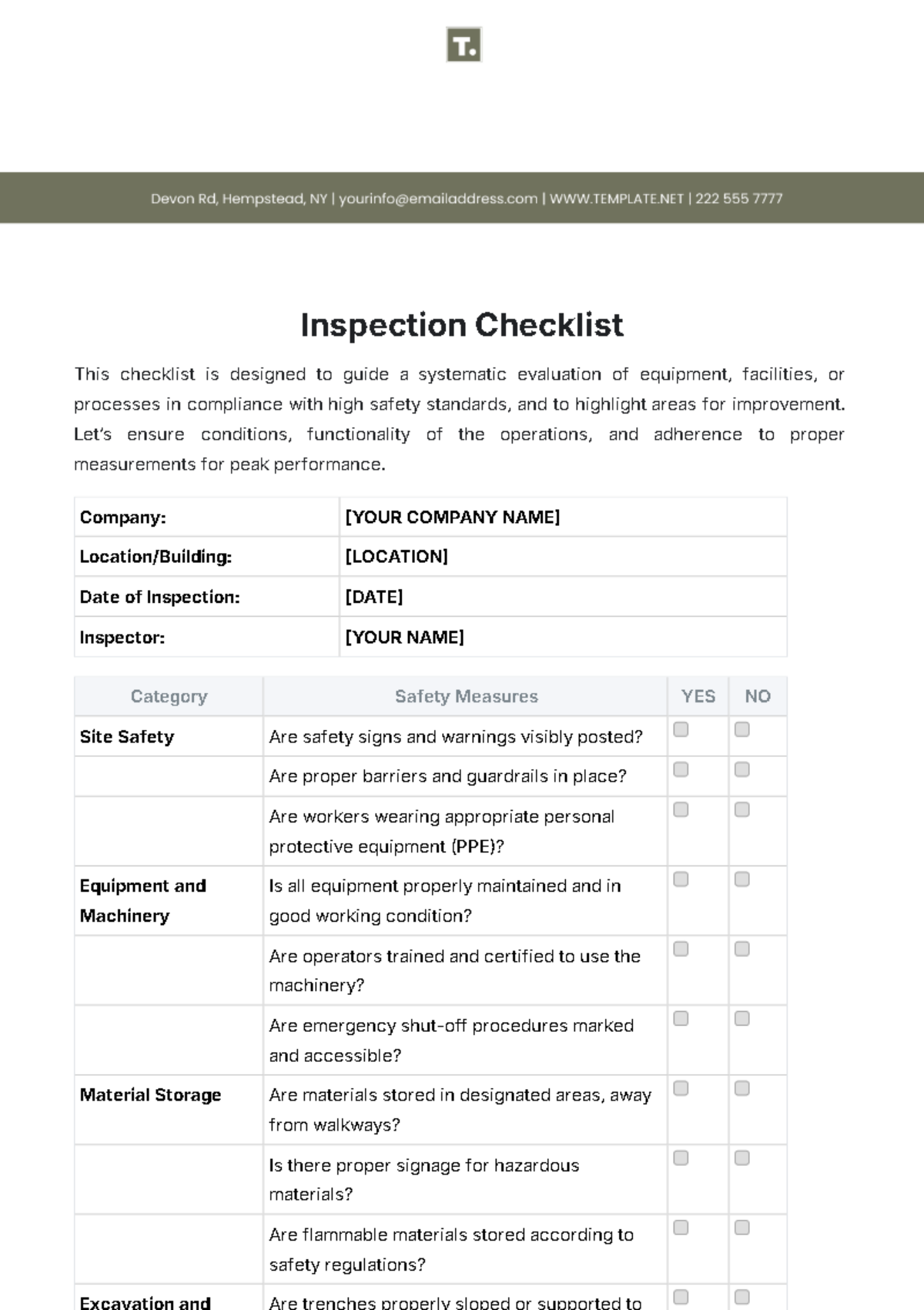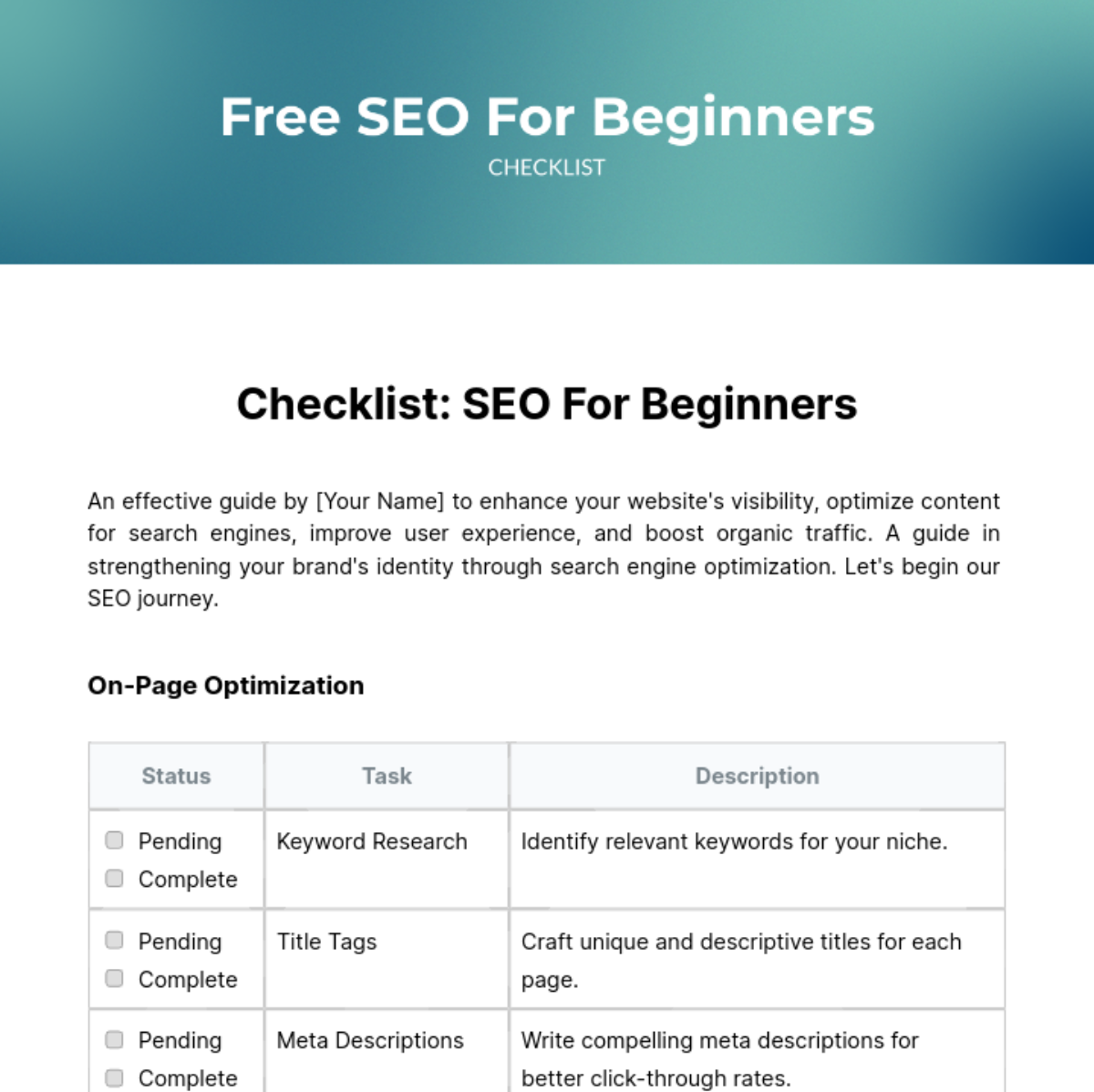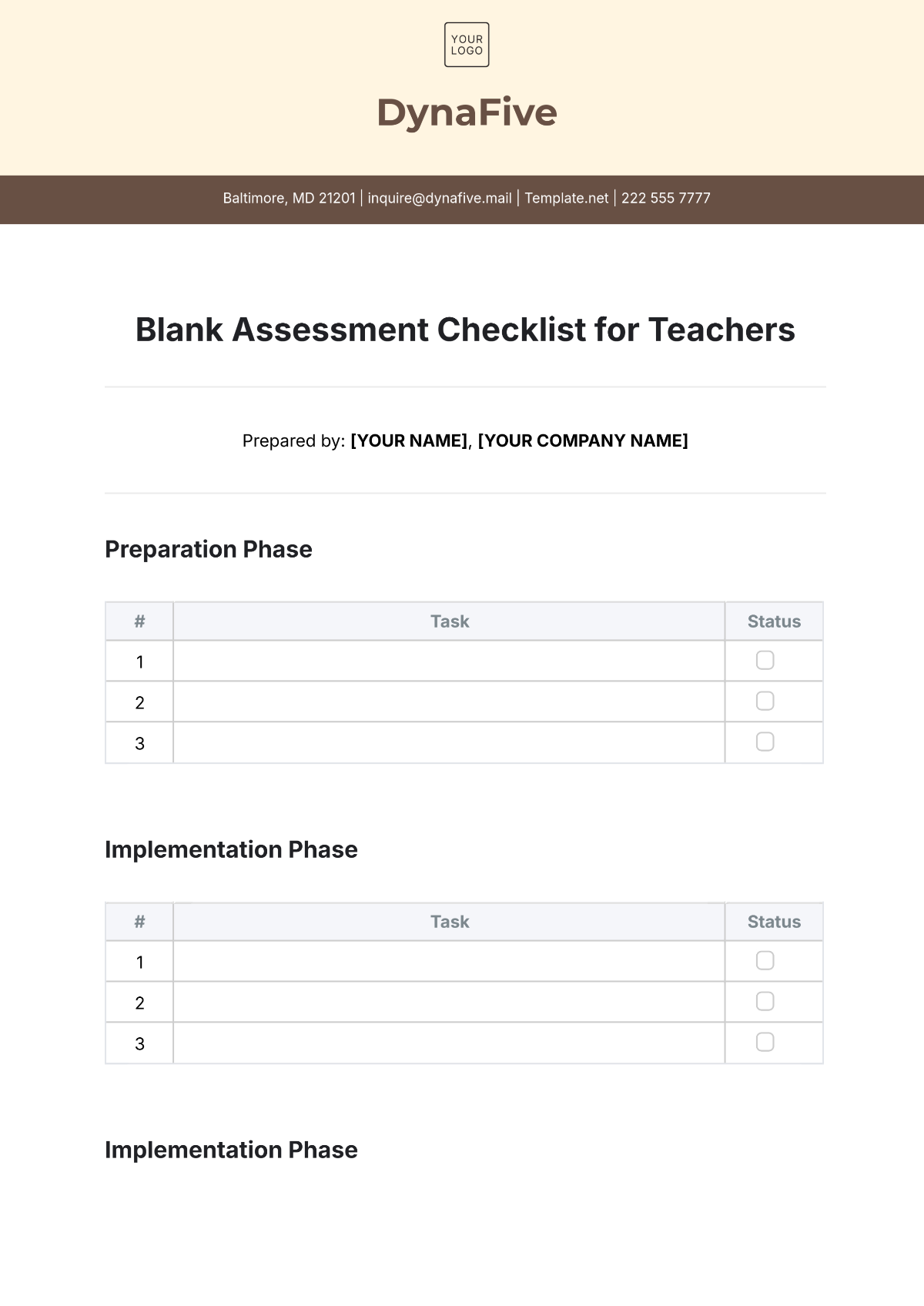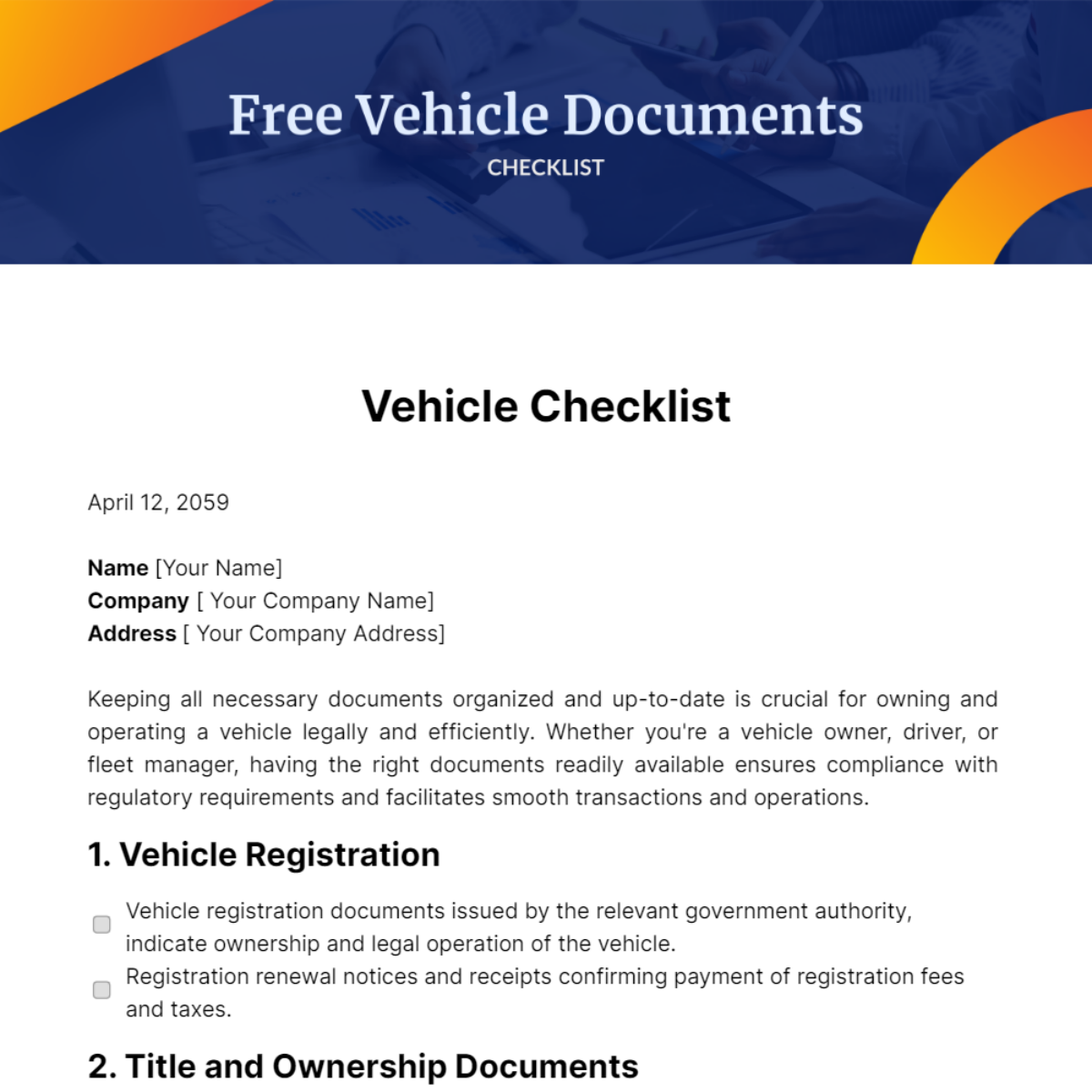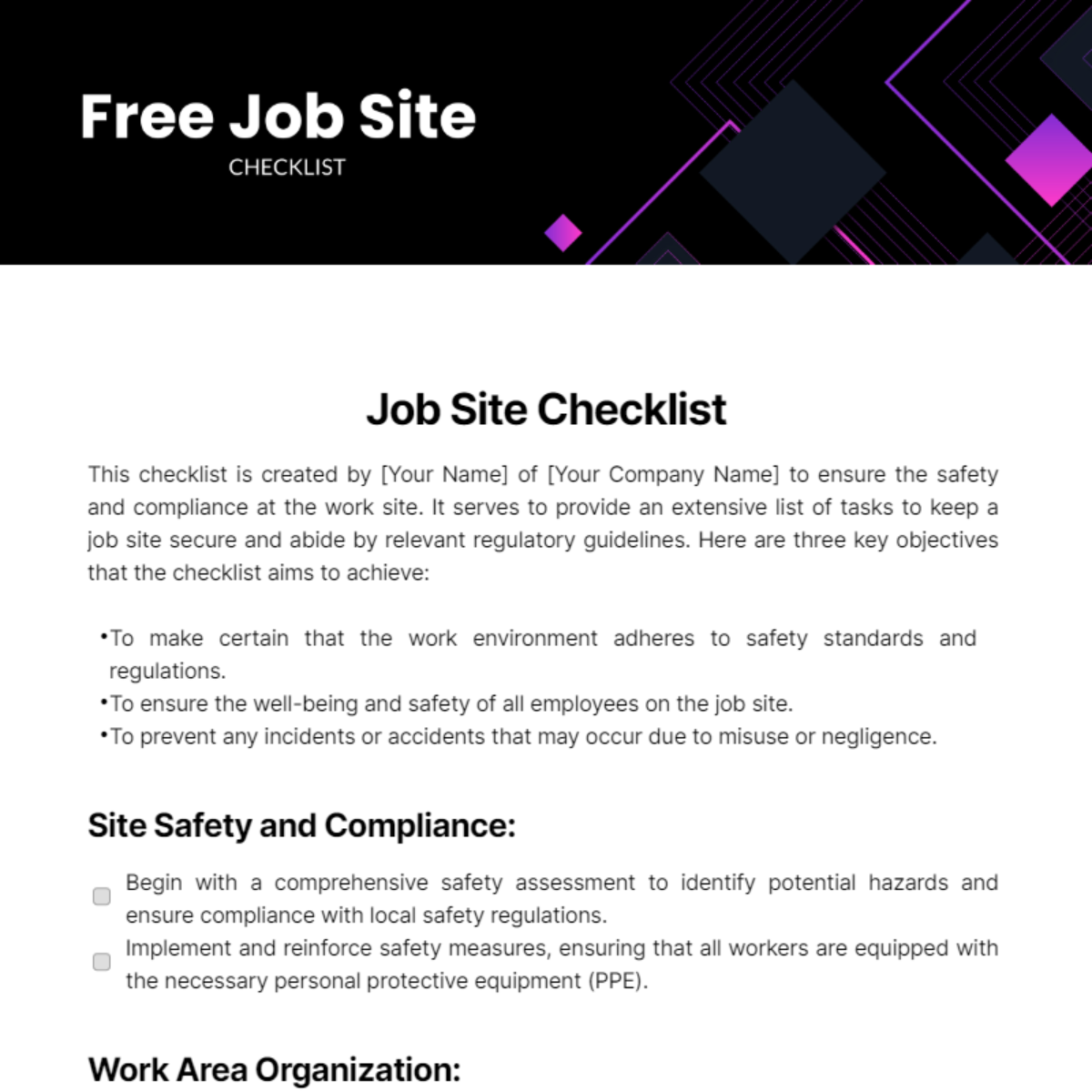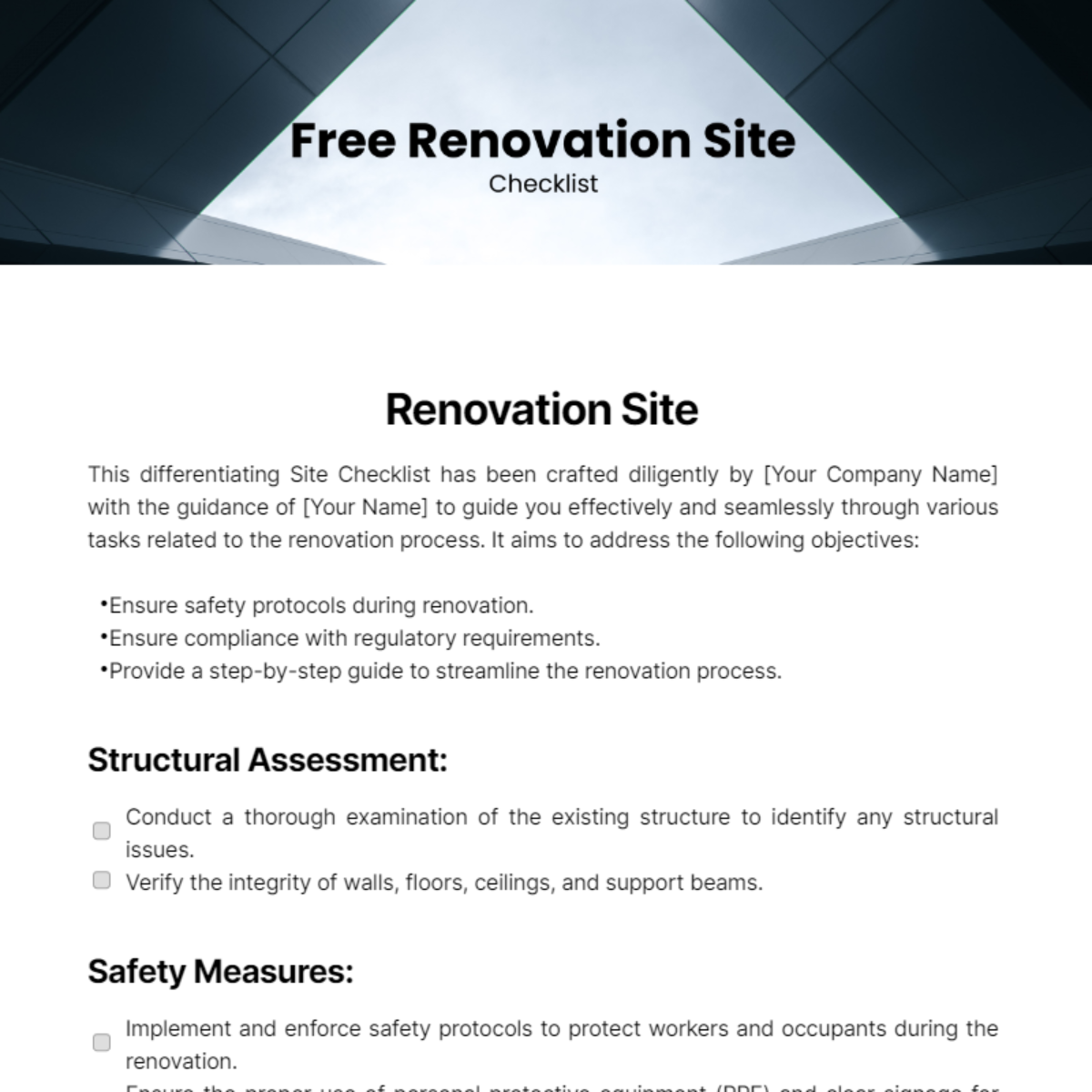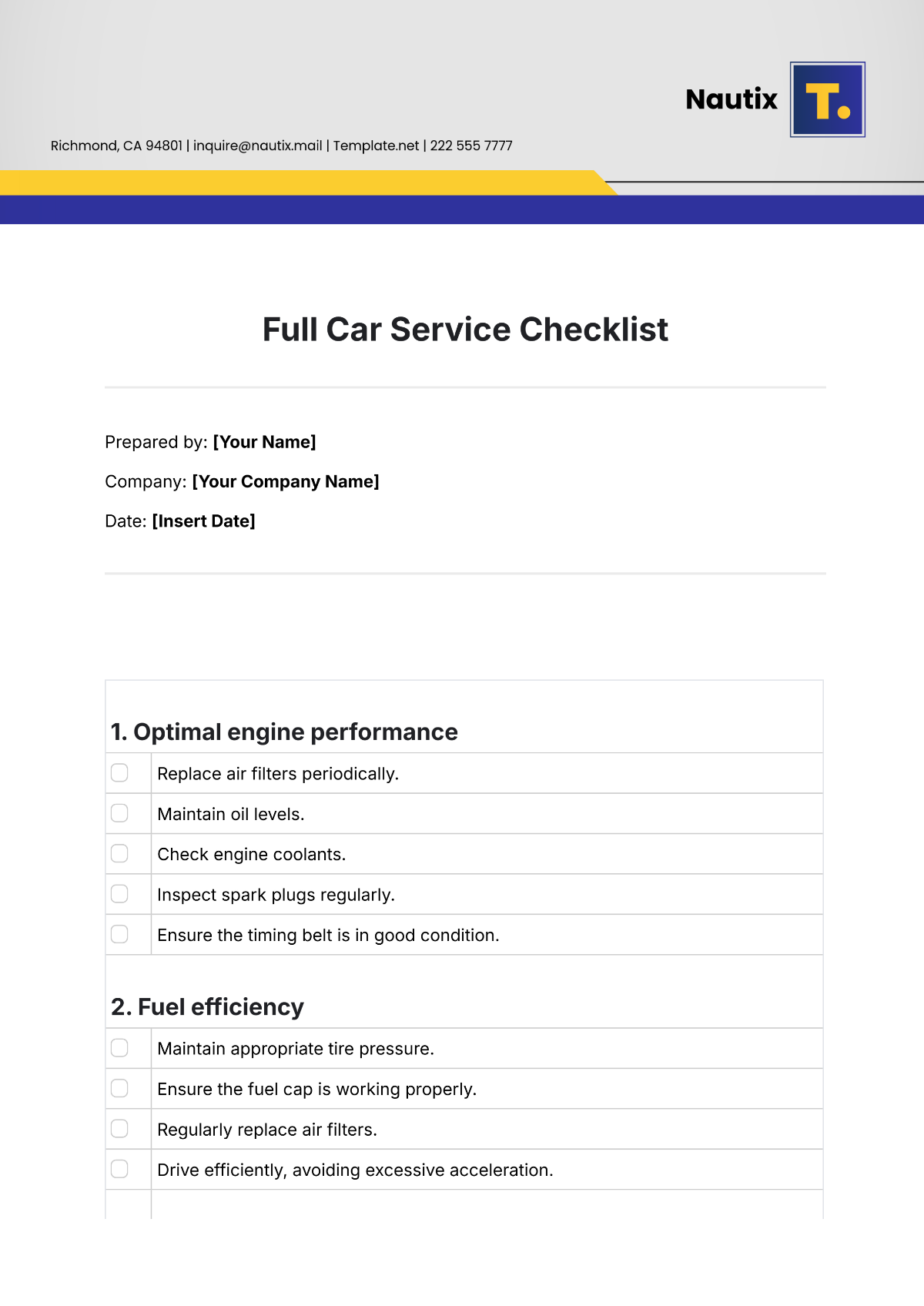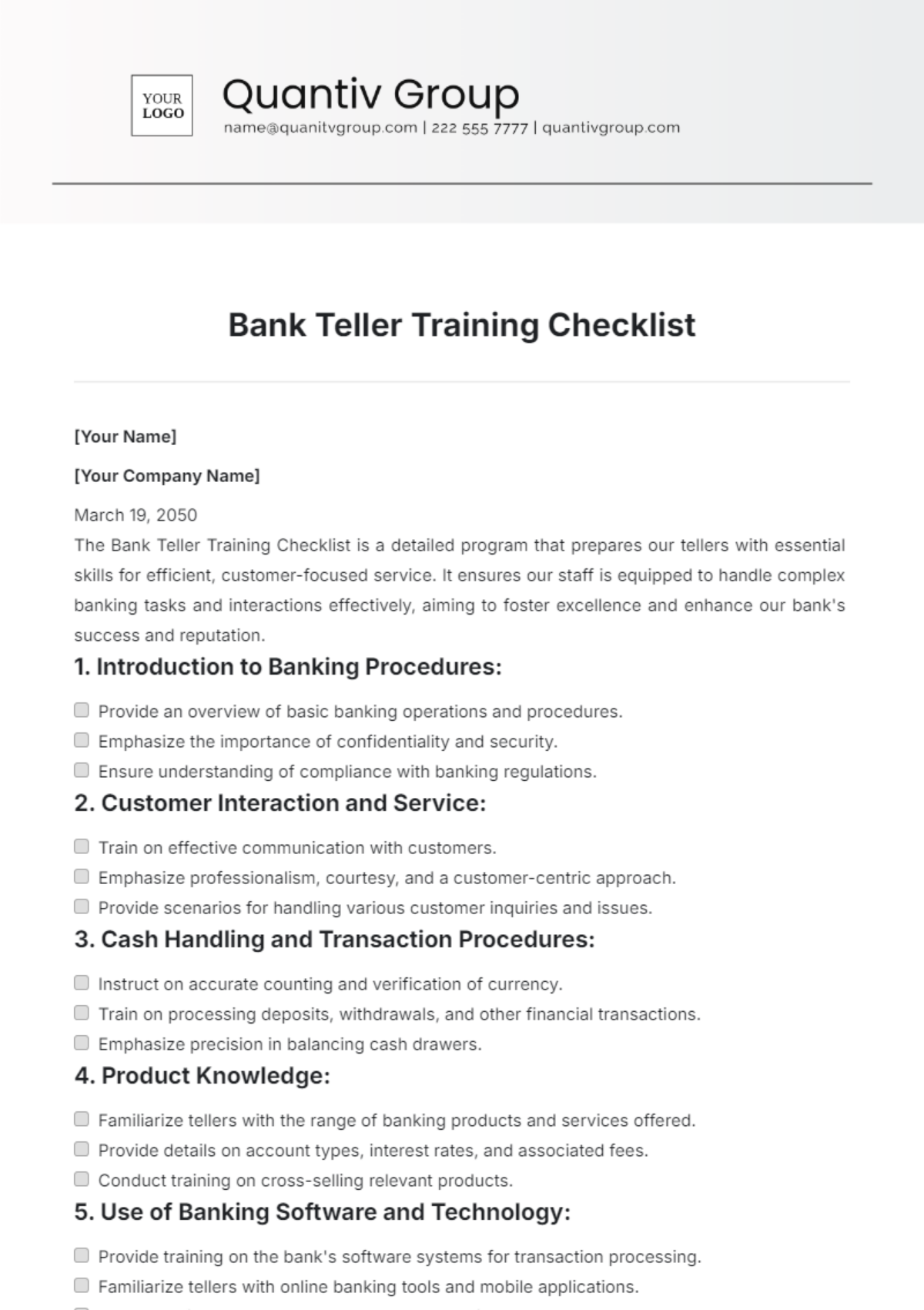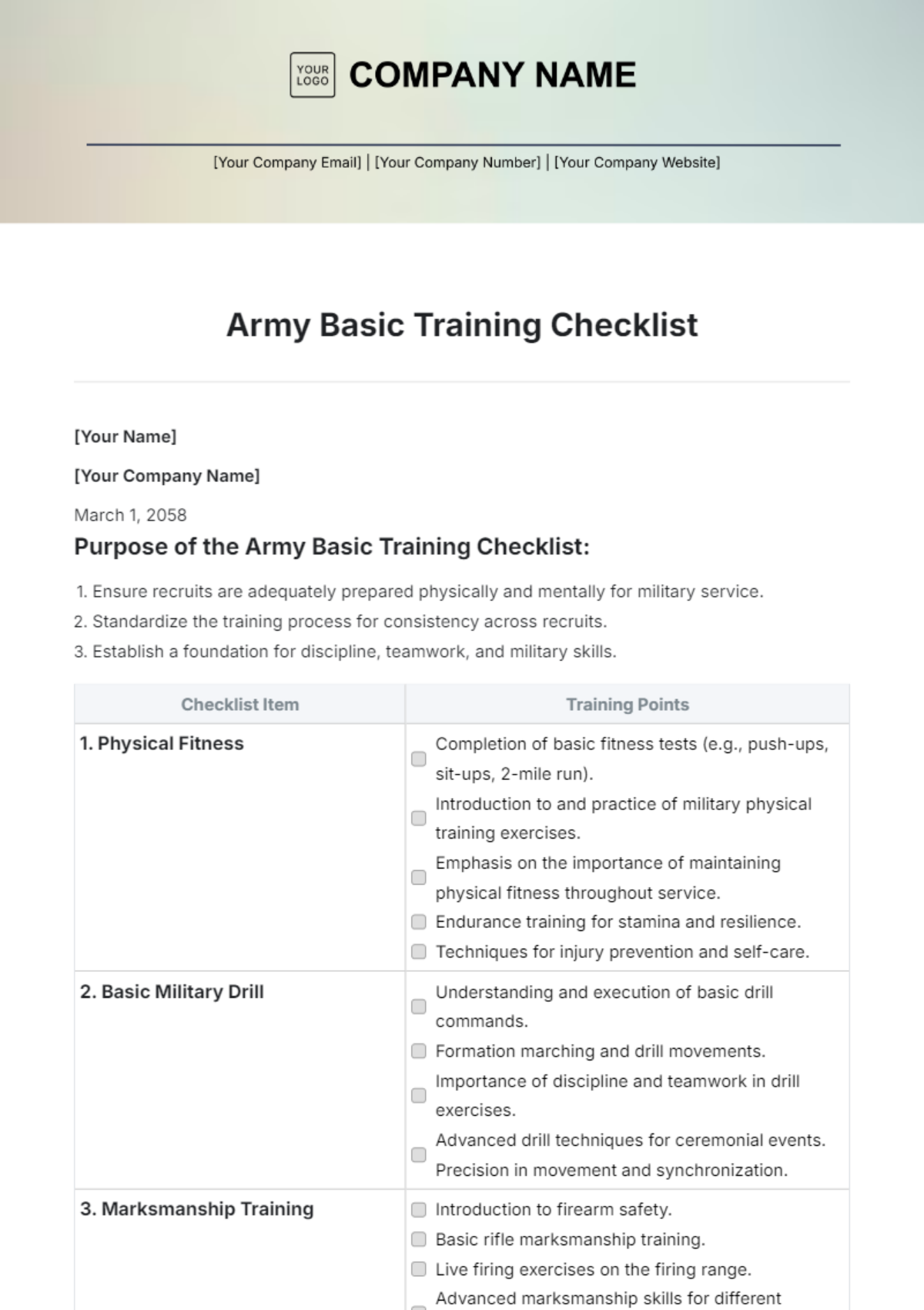Website Development Checklist
Introduction
Creating a website involves several steps, from initial planning to post-launch maintenance. A well-structured checklist can help ensure that no critical aspects are overlooked during the development process. Use this checklist to guide you through each phase of your website project, ensuring a smooth and successful launch.
1. Planning and Strategy
Define website goals and objectives.
Identify target audience and user personas.
Conduct competitor analysis.
Create a sitemap outlining website structure and content.
2. Design
Choose a color scheme and typography.
Create wireframes for key pages.
Develop design mockups or prototypes.
Ensure designs are responsive (mobile-friendly).
Gather feedback from stakeholders and iterate.
3. Content Creation
Create a content strategy (blogs, articles, videos).
Write SEO-optimized content for each page.
Create or source images and multimedia.
Ensure content is accessible (alt text, captions).
4. Development
Choose a tech stack (HTML, CSS, JavaScript, CMS).
Set up the development environment.
Develop front-end (HTML, CSS, JavaScript).
Develop back-end (server, database, APIs).
Ensure mobile responsiveness and cross-browser compatibility.
Implement a content management system (if needed).
5. Testing
Conduct functionality testing (forms, buttons, links).
Perform usability testing with real users.
Test for browser compatibility (Chrome, Firefox, Safari, etc.).
Ensure mobile responsiveness on different devices.
Check page loading speed and performance.
Conduct security testing (vulnerabilities, SSL certificate).
6. SEO and Analytics
Optimize on-page SEO (title tags, meta descriptions, headings).
Set up Google Analytics and tracking codes.
Create an XML sitemap and submit it to search engines.
Implement schema markup (if applicable).
7. Launch Preparation
Finalize content and design.
Set up hosting and domain configurations.
Ensure search engines index all pages.
Create a launch plan (marketing, announcements).
8. Post-Launch
Monitor website performance and user feedback.
Conduct ongoing SEO and content updates.
Regularly check for broken links and fix them.
Plan for future enhancements and updates.
Schedule regular backups and maintenance checks.
Optional Considerations
Compliance: Ensure compliance with regulations (GDPR, ADA).
Backup Solutions: Set up regular backups.
Security Measures: Implement firewalls and security plugins.
